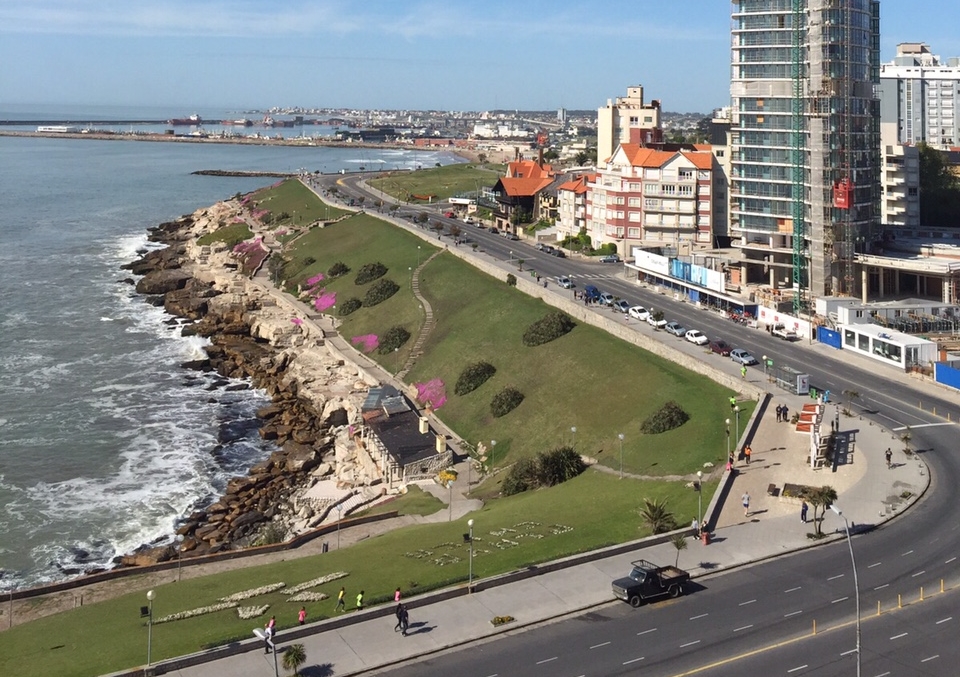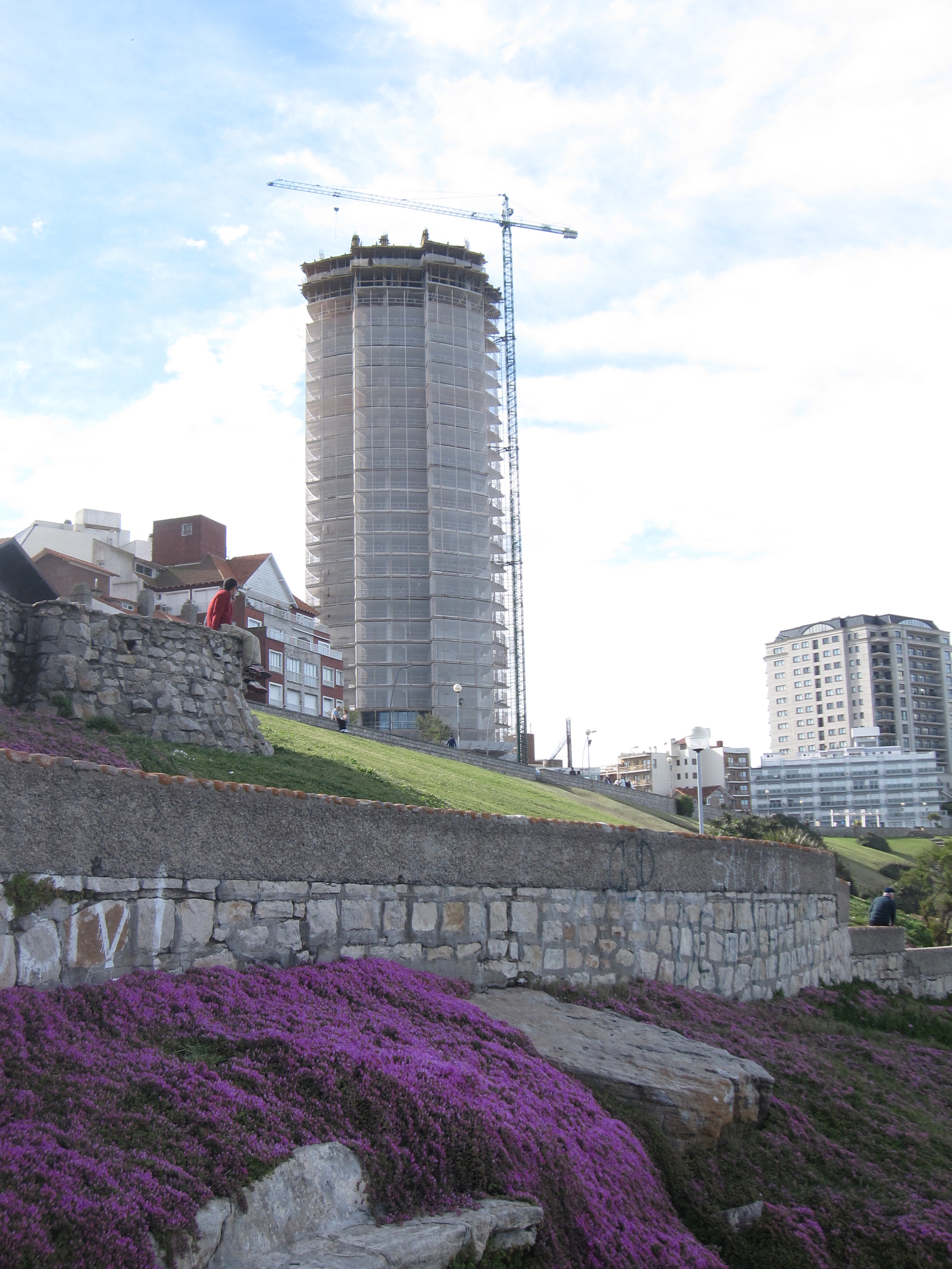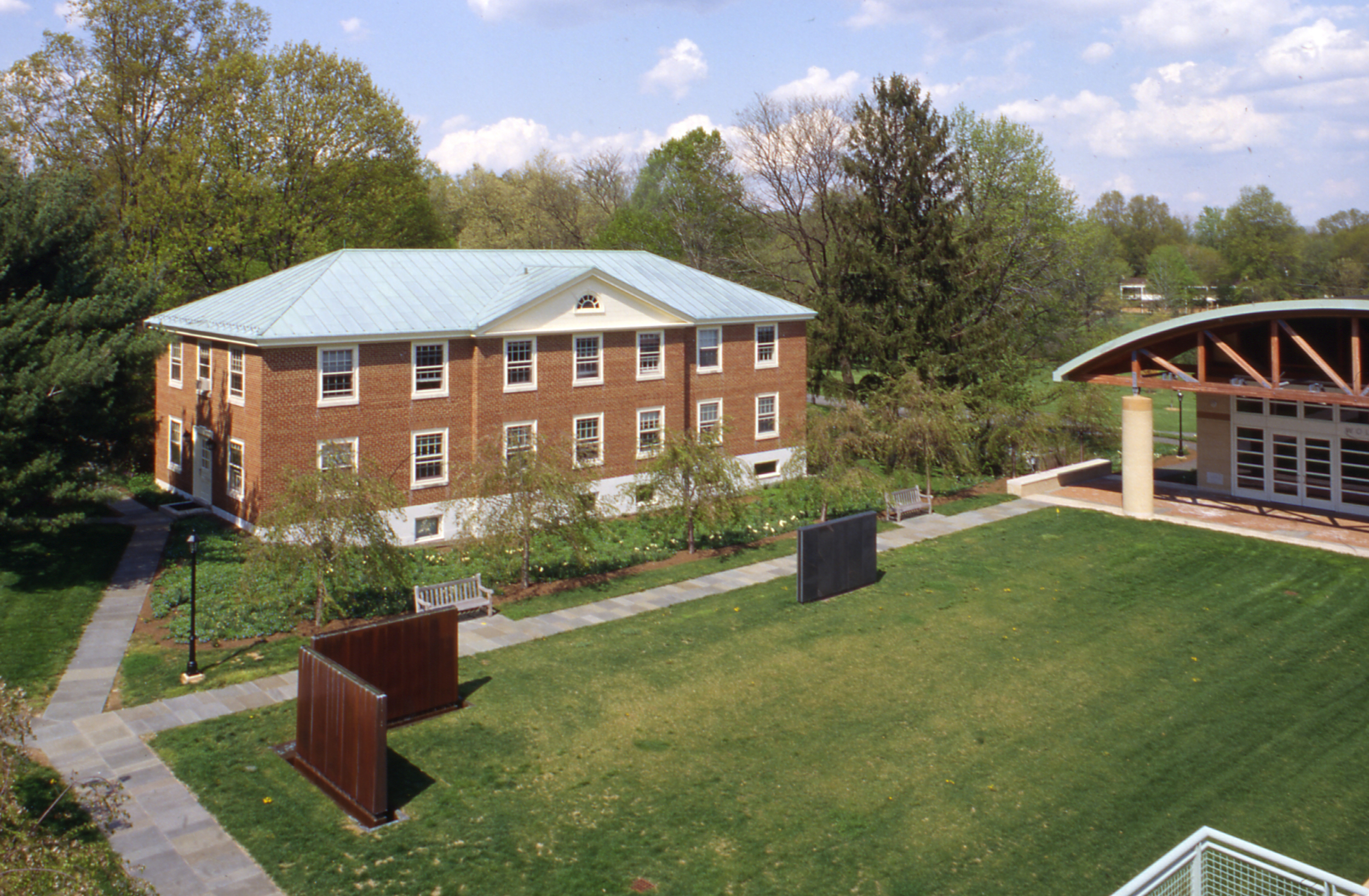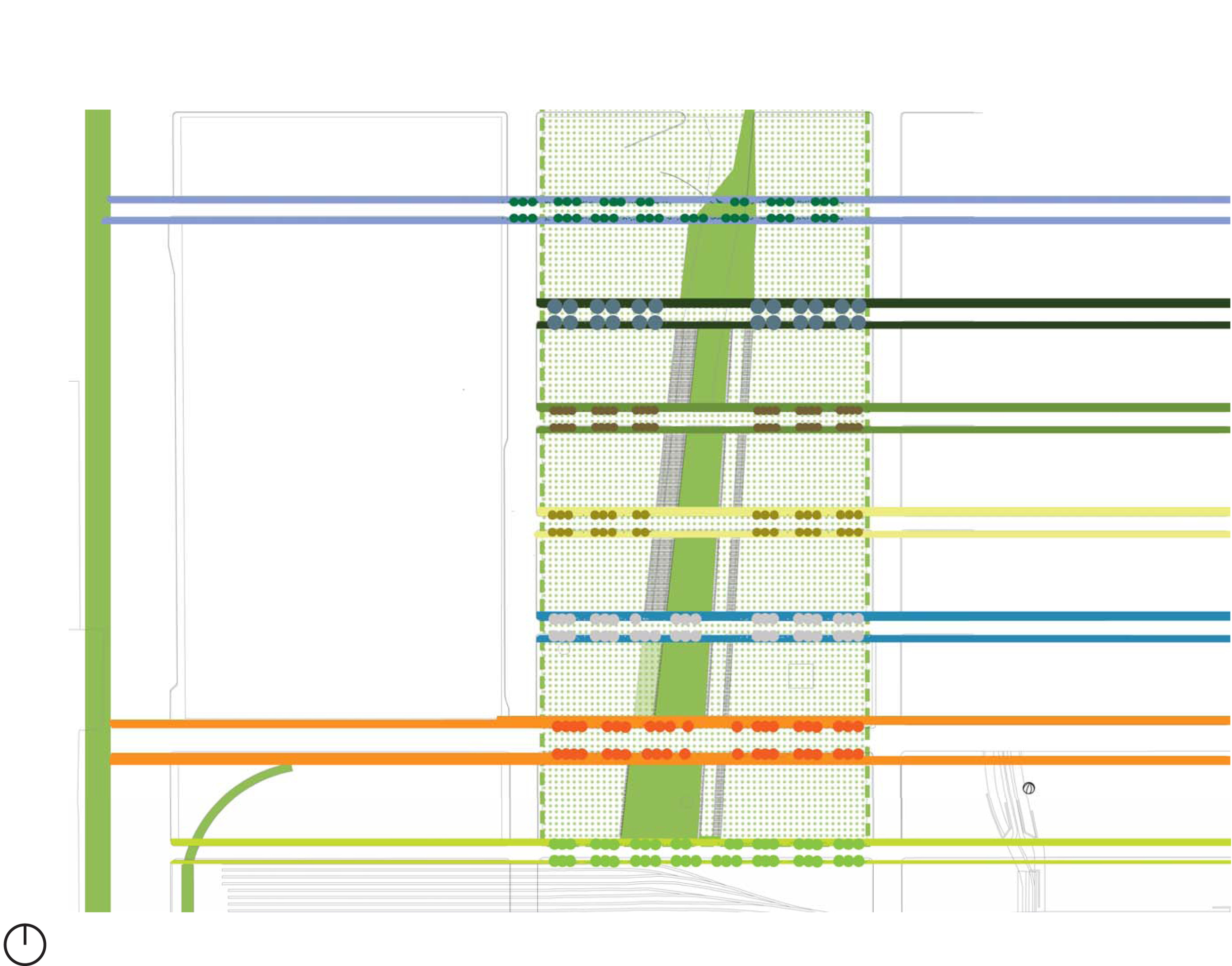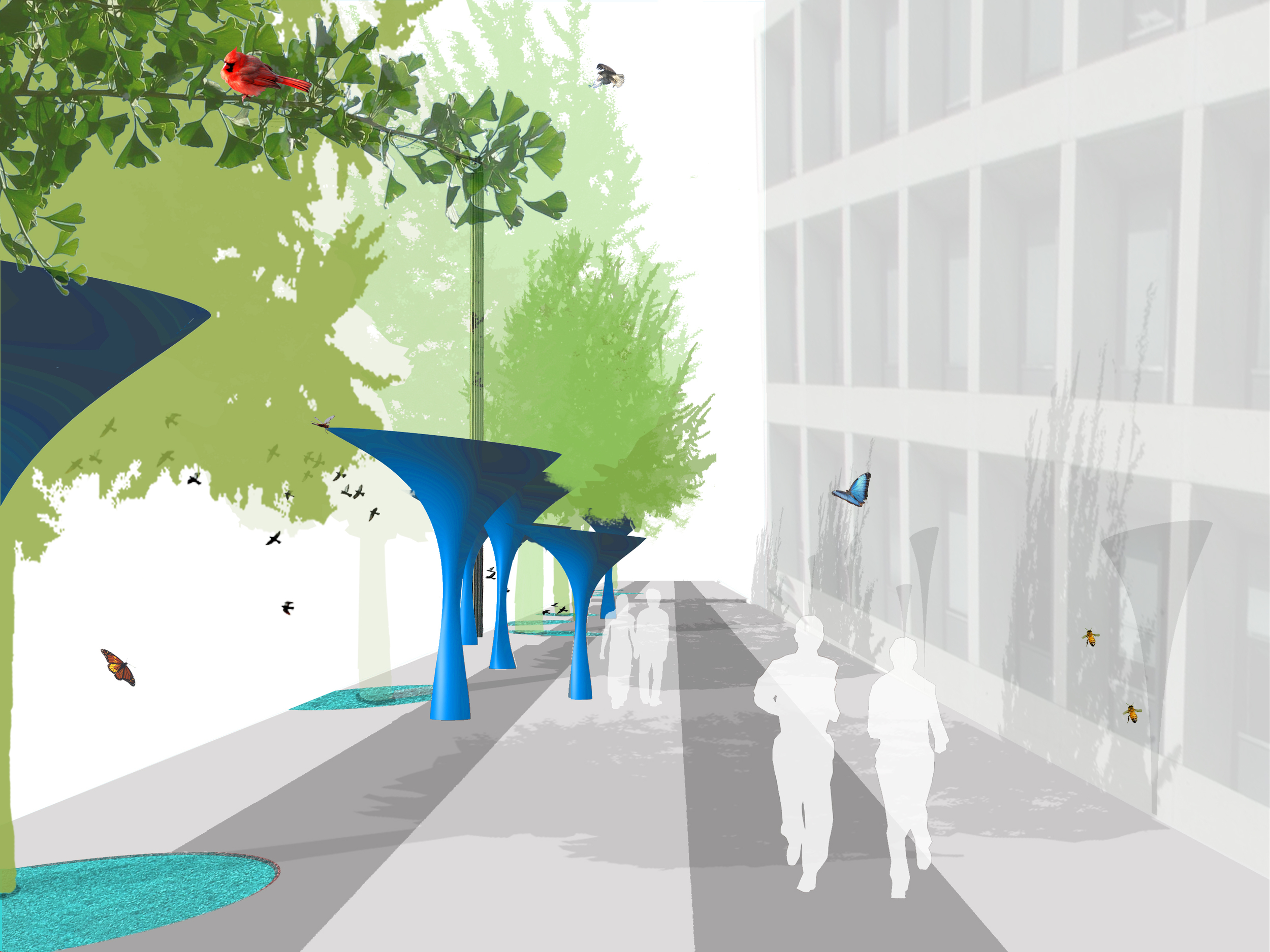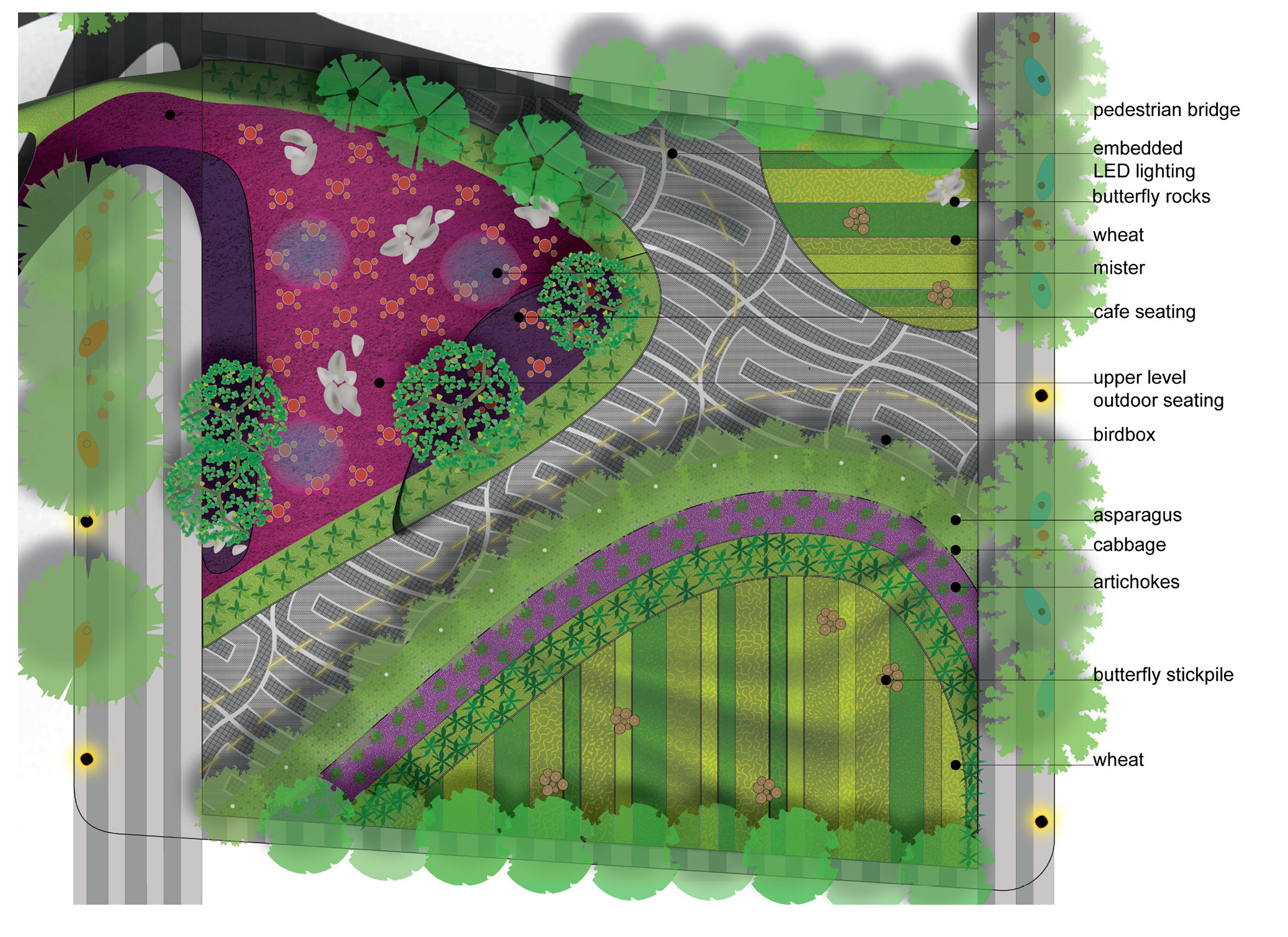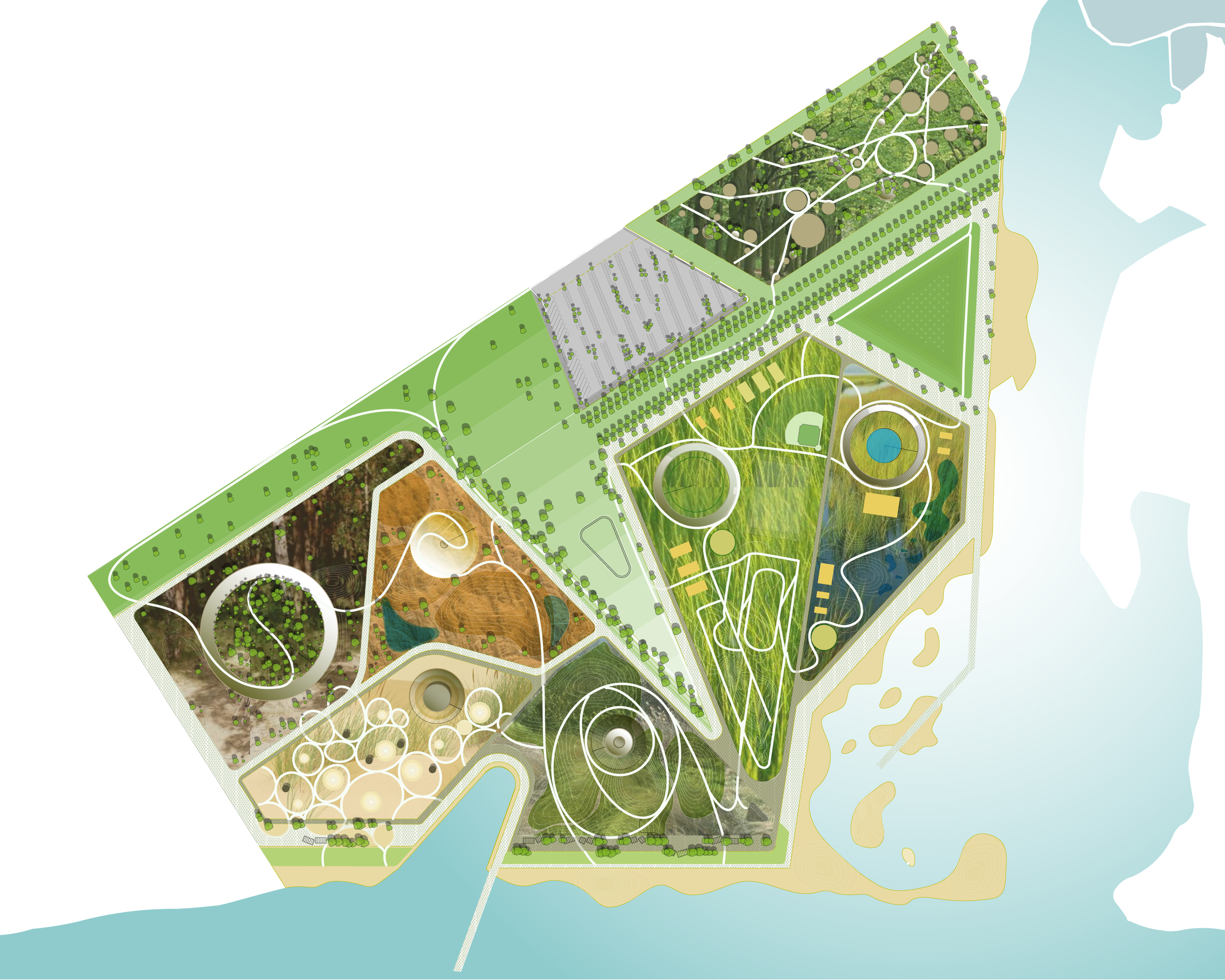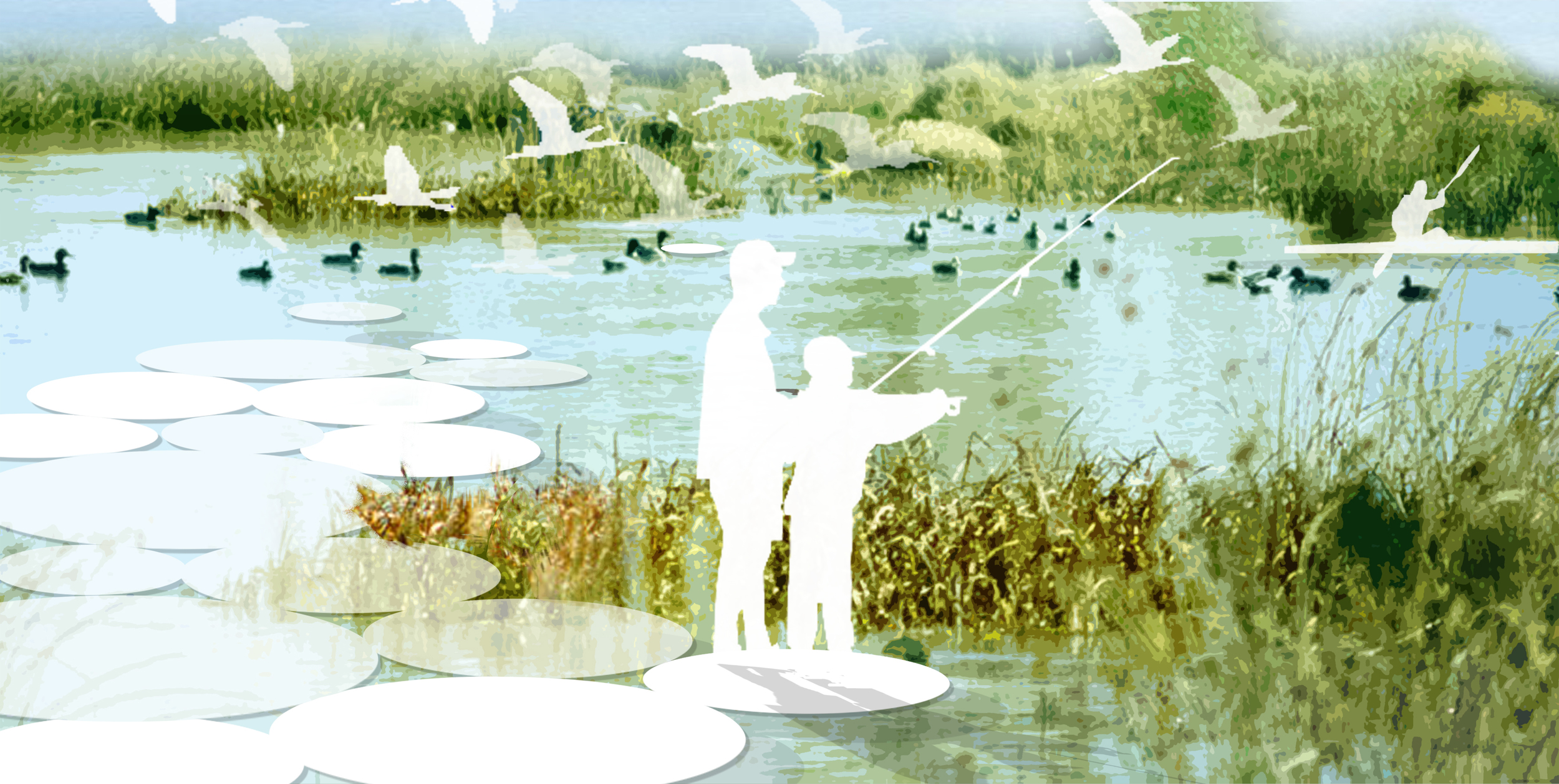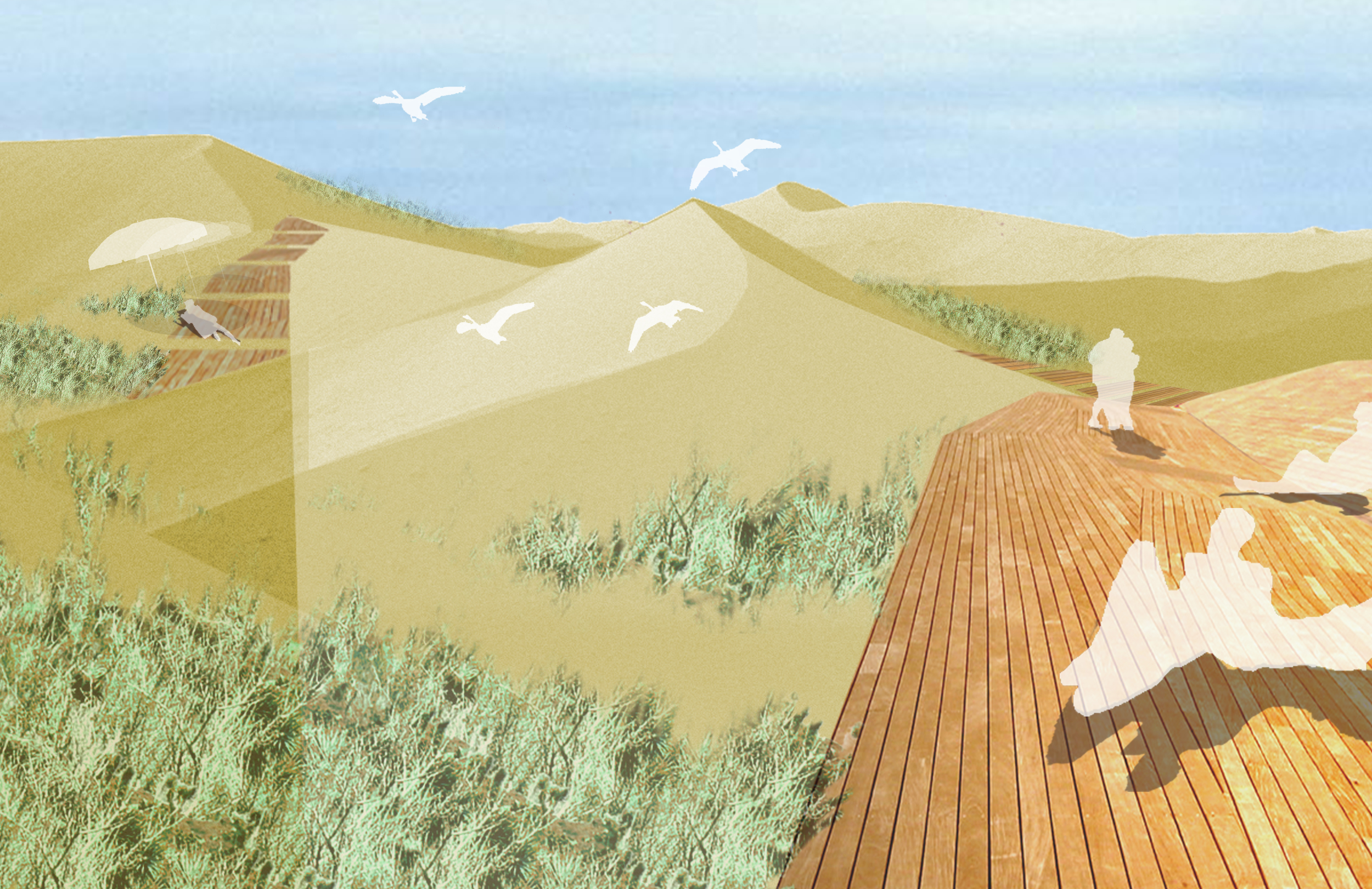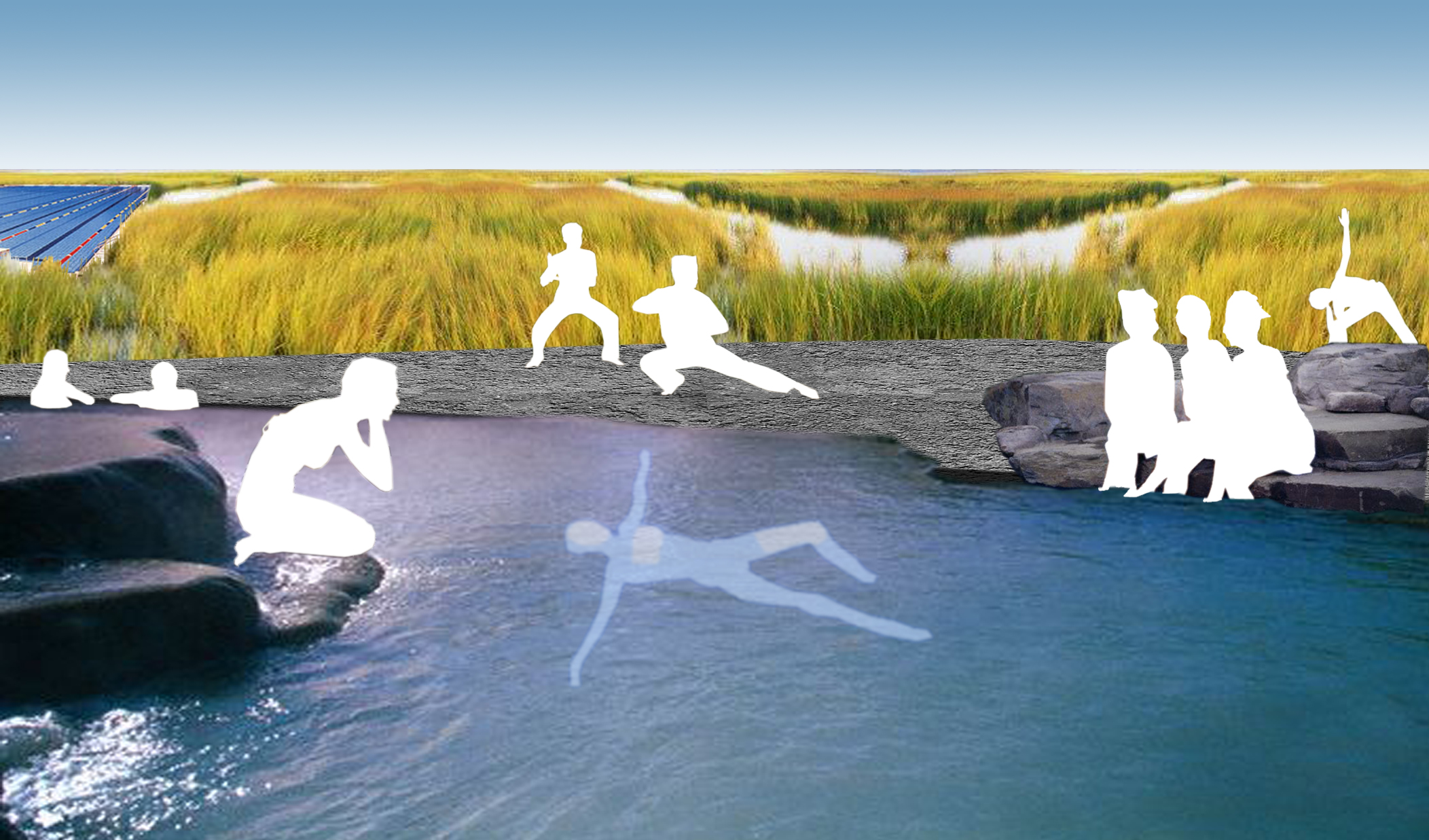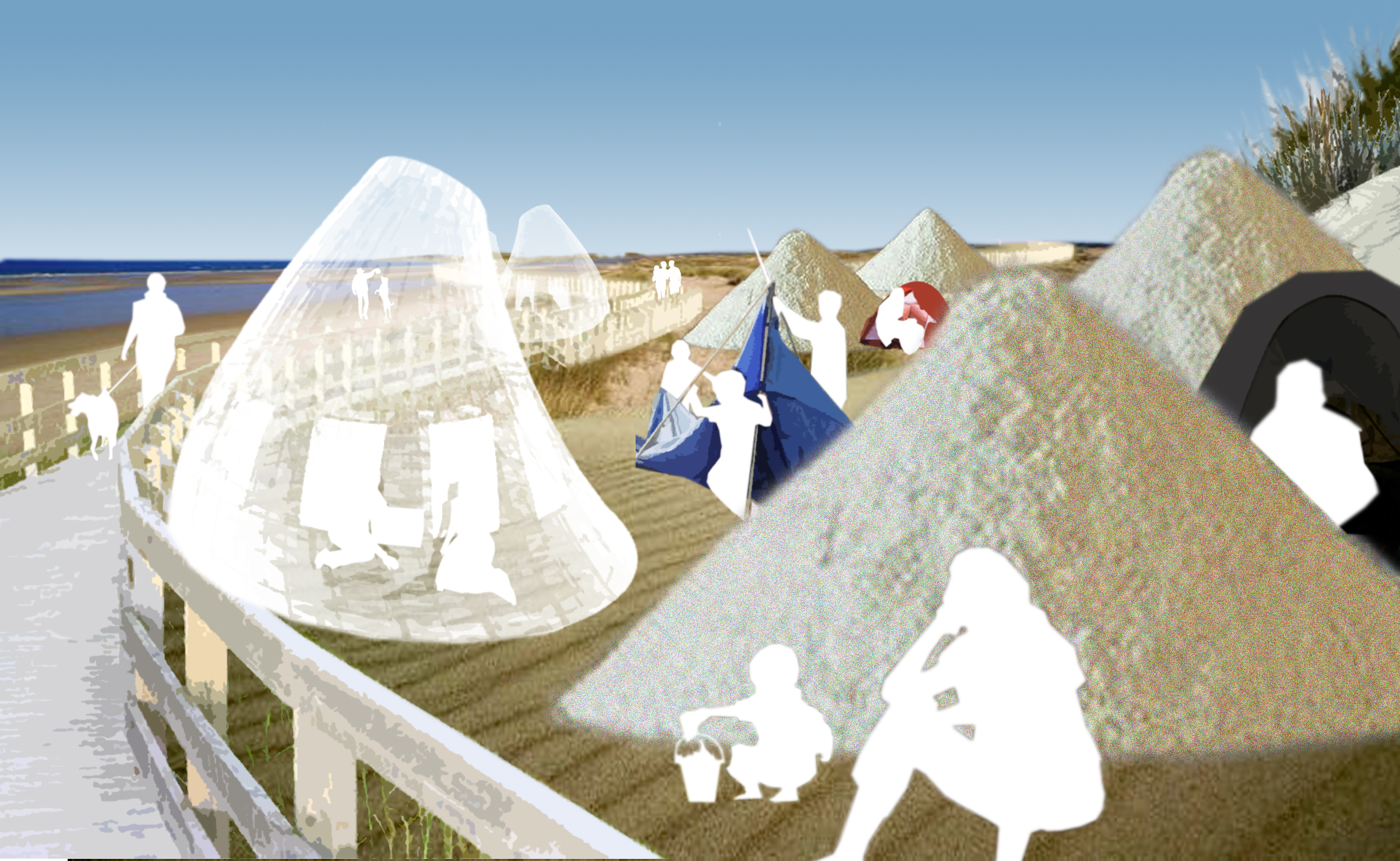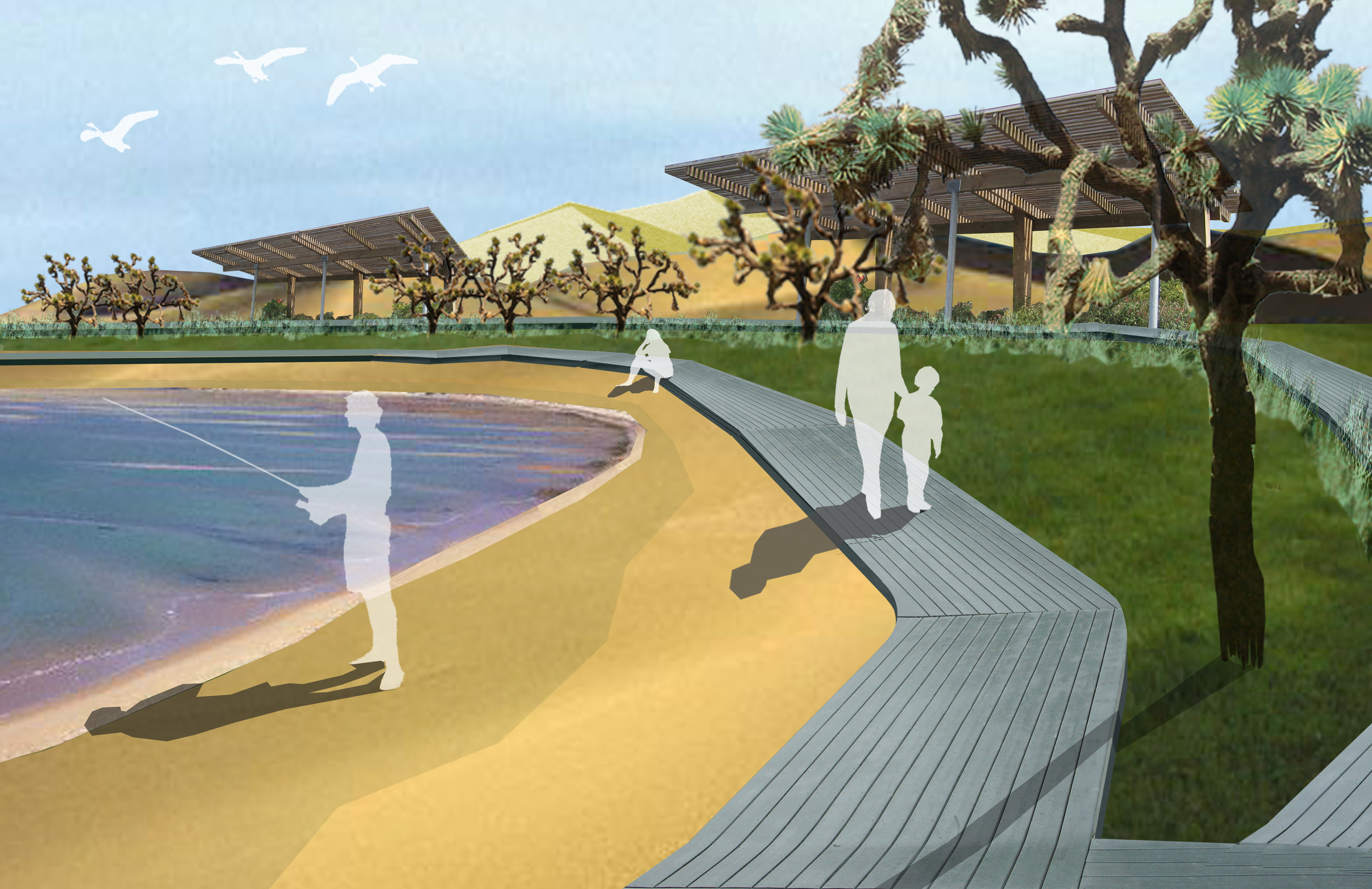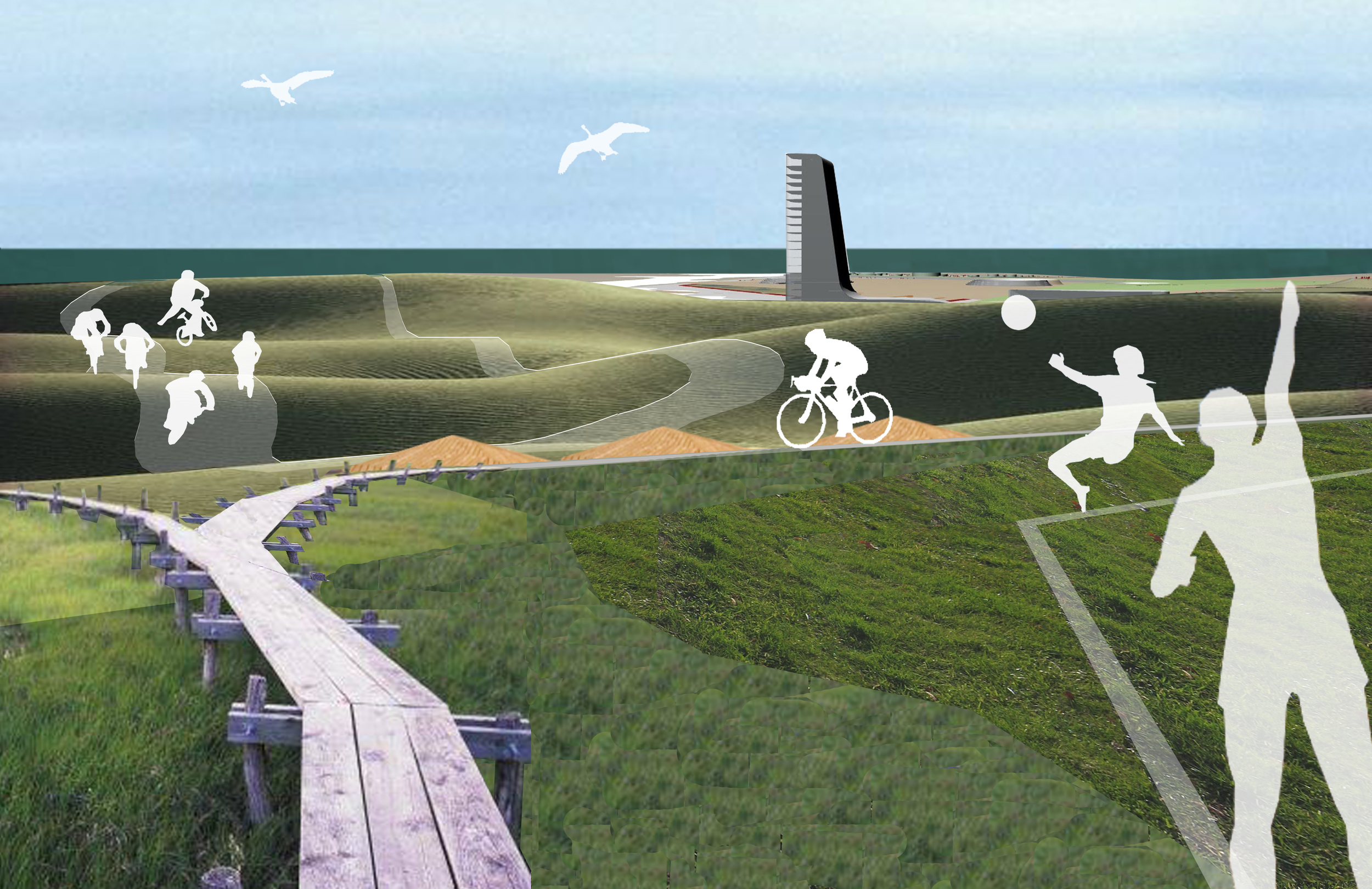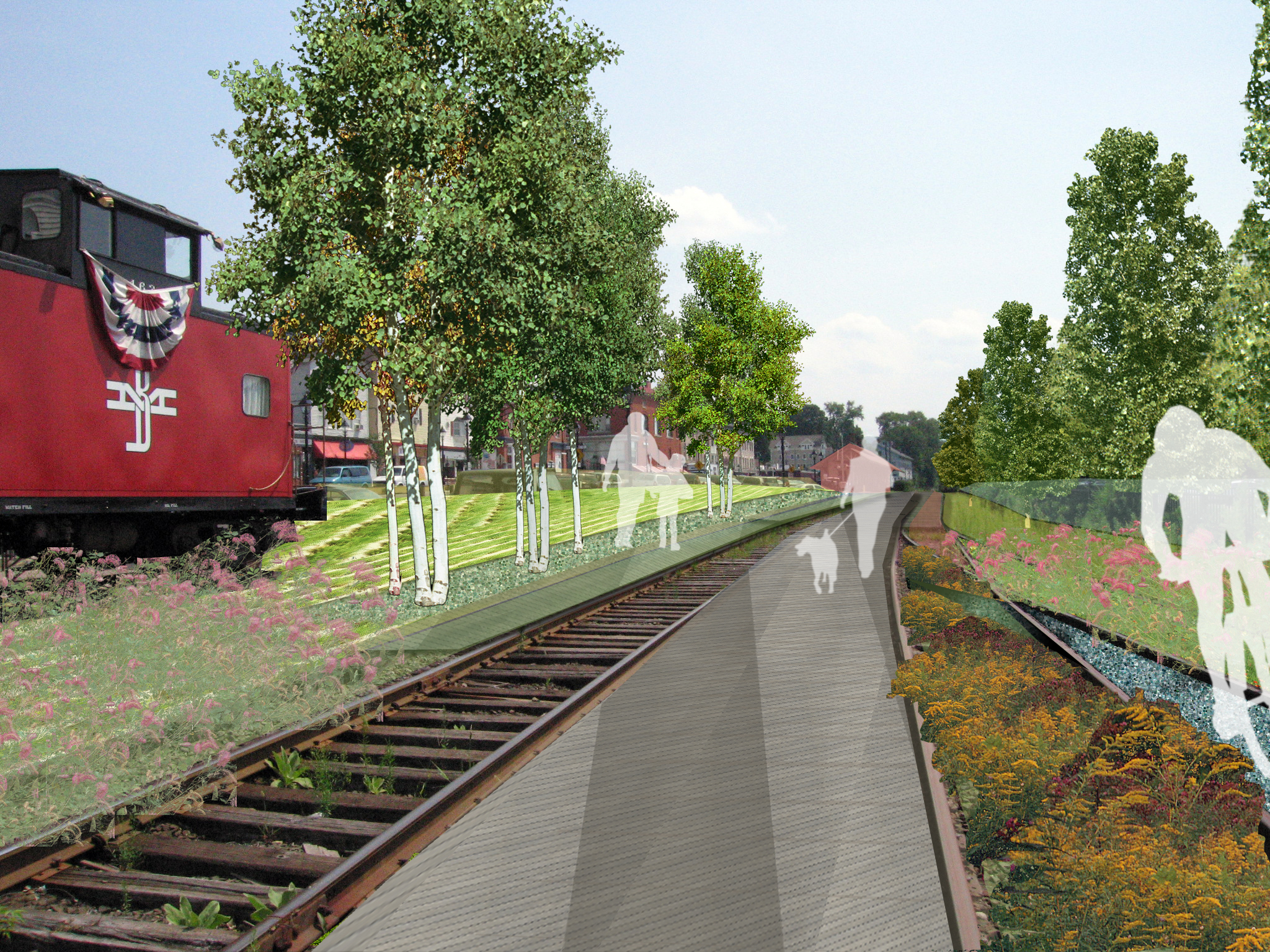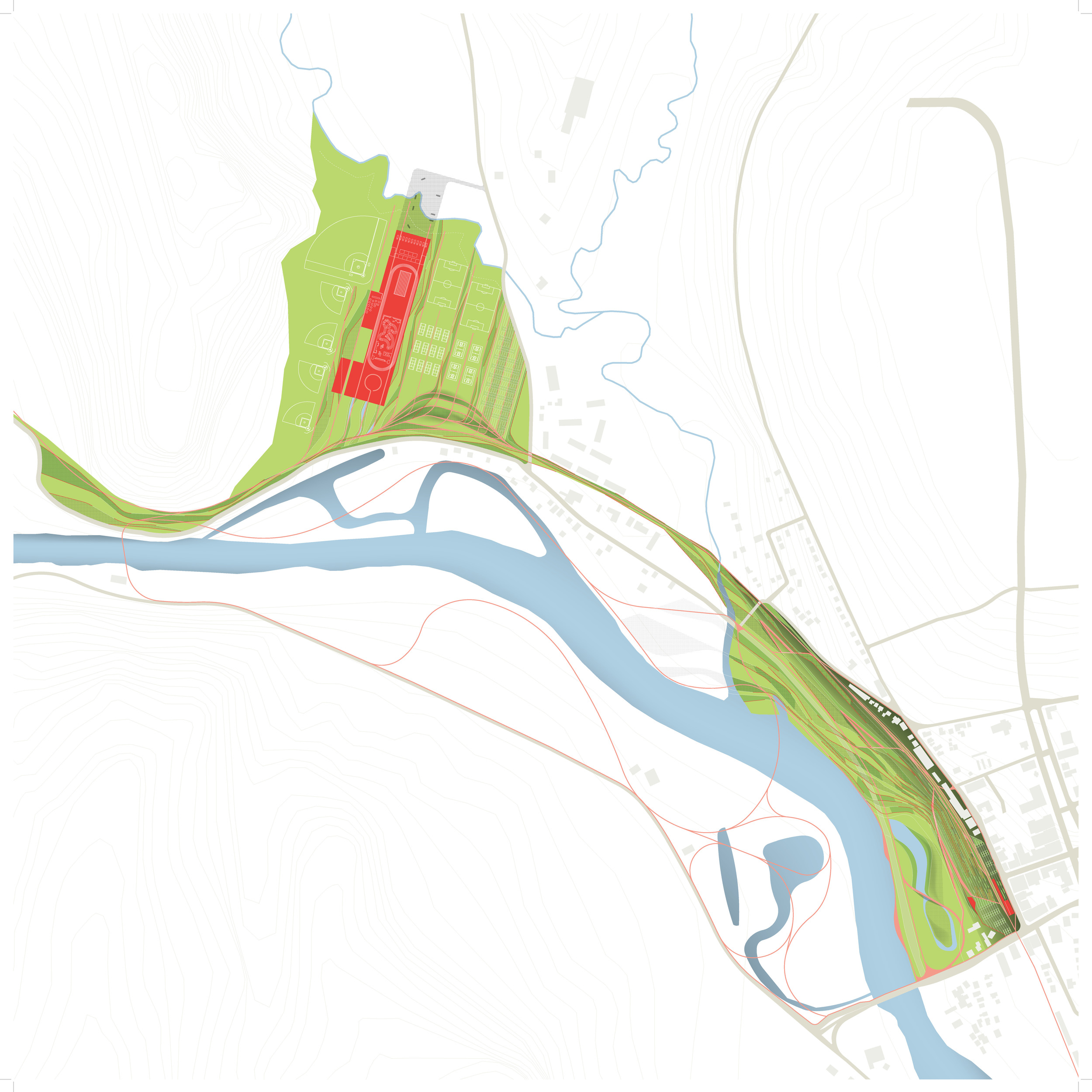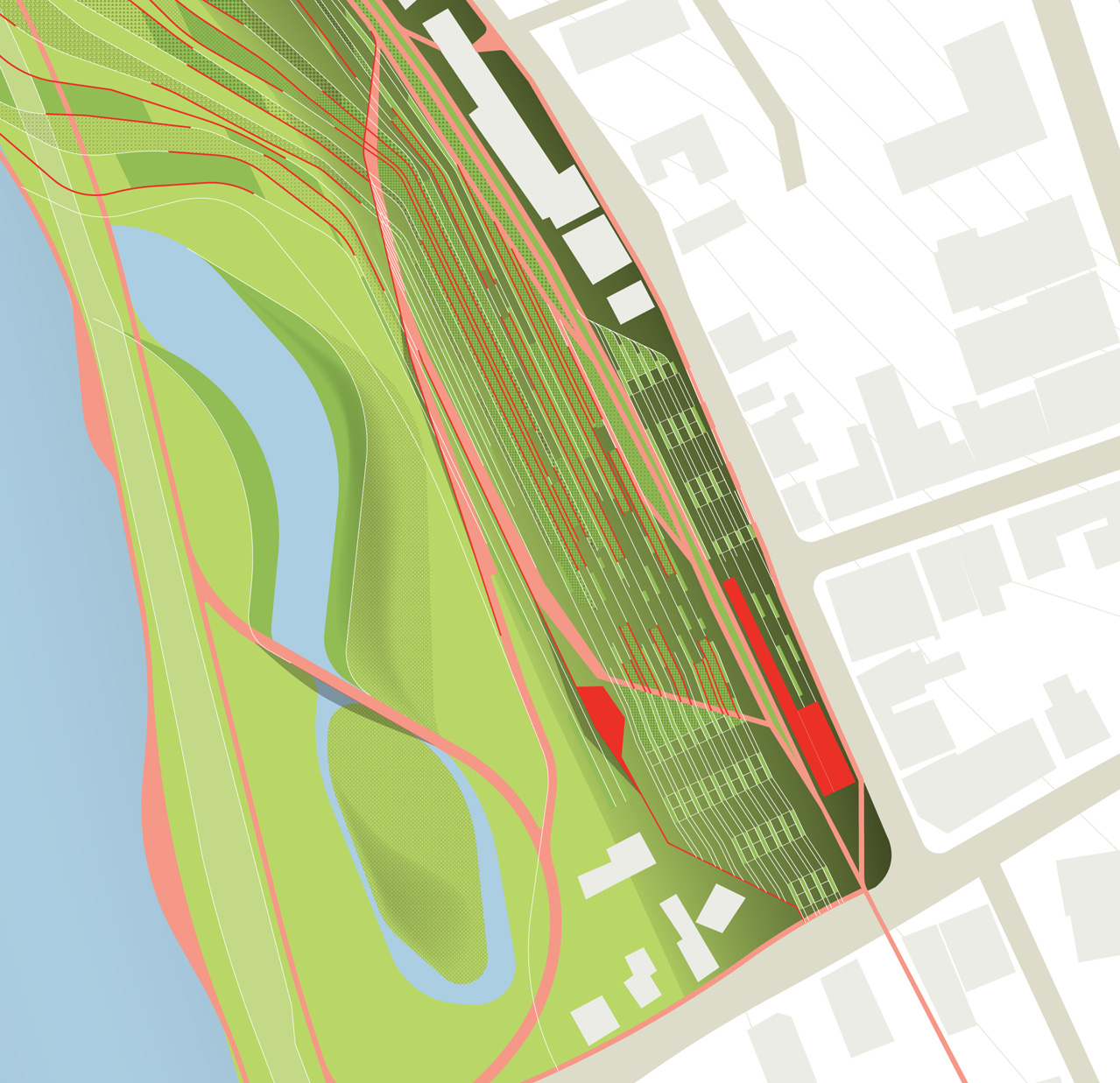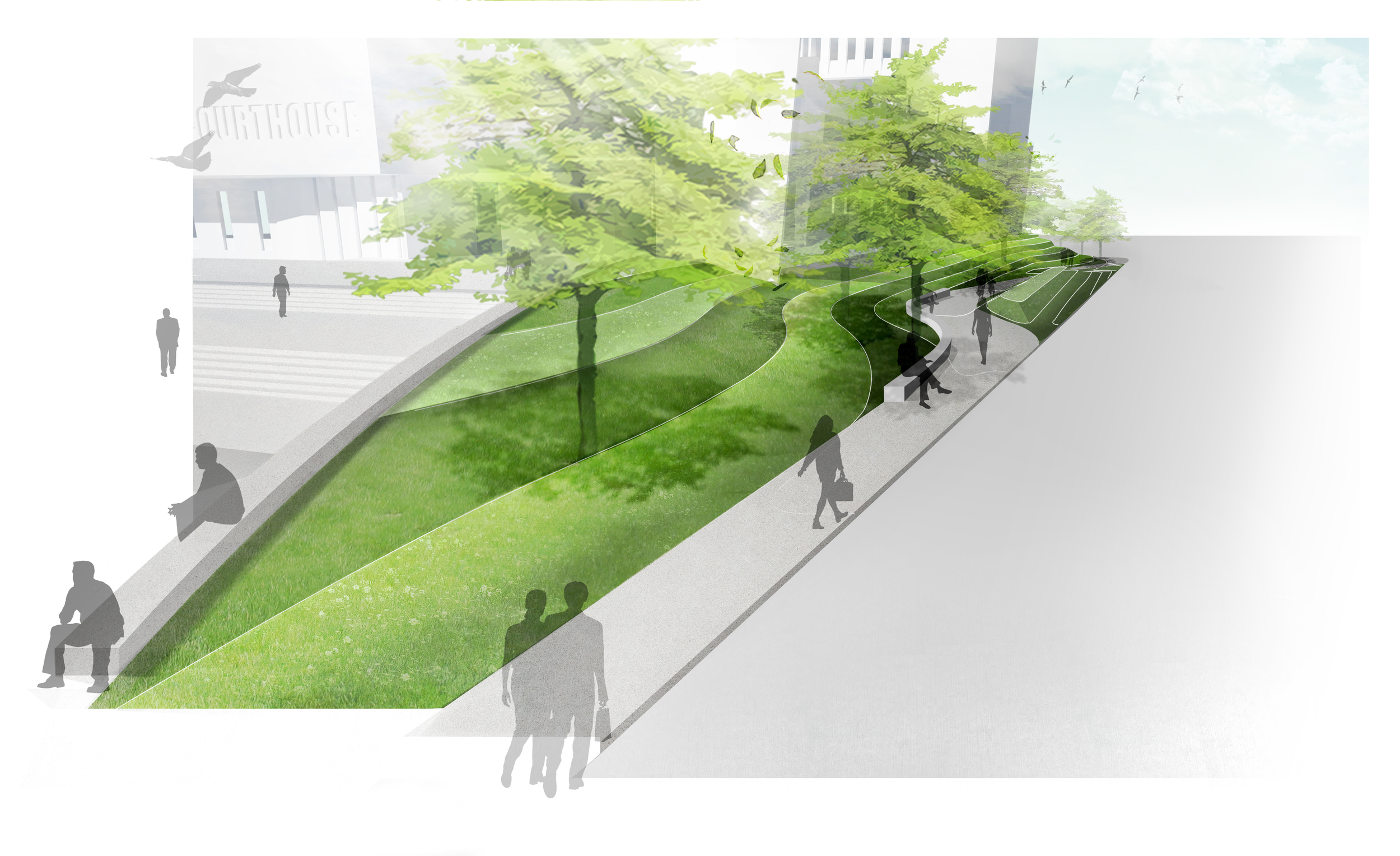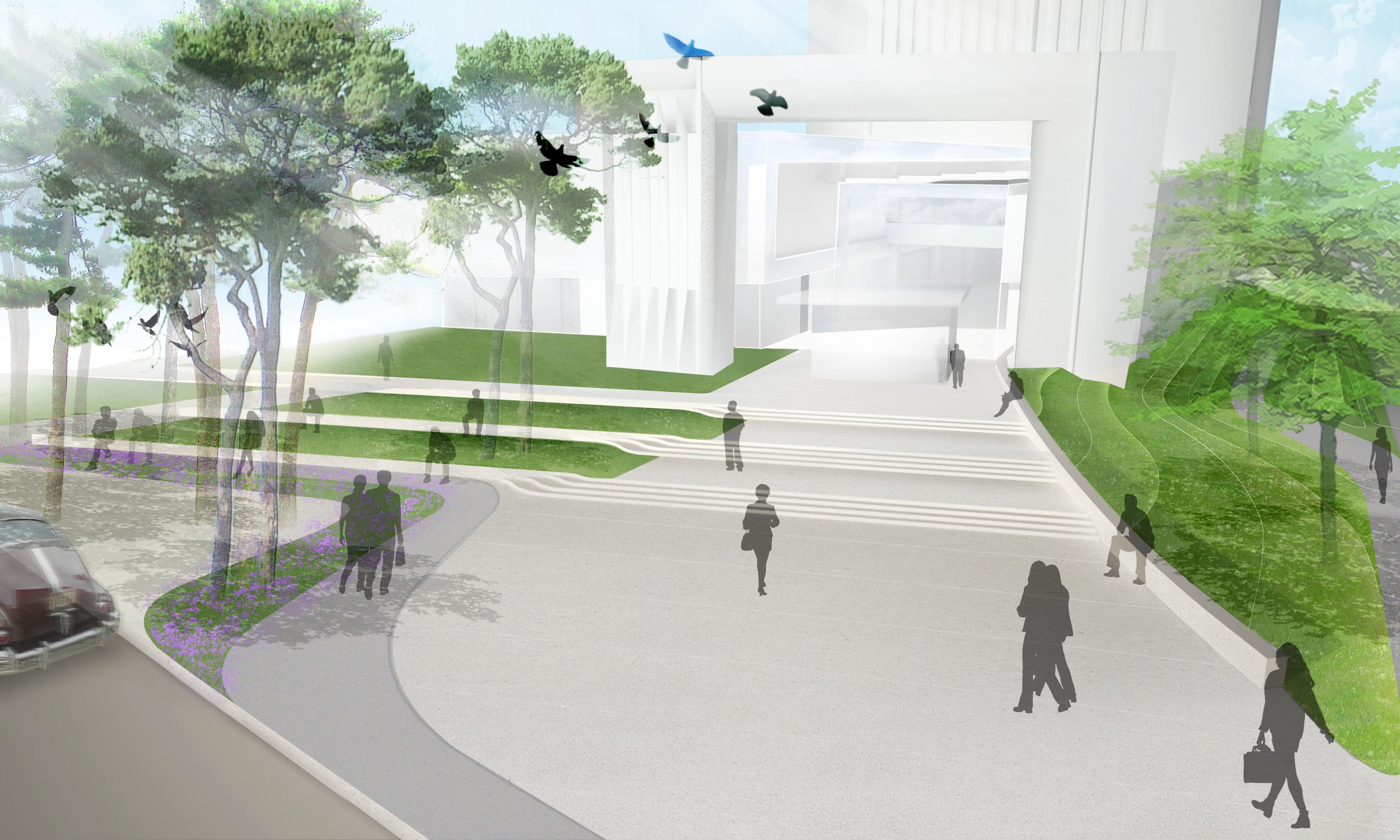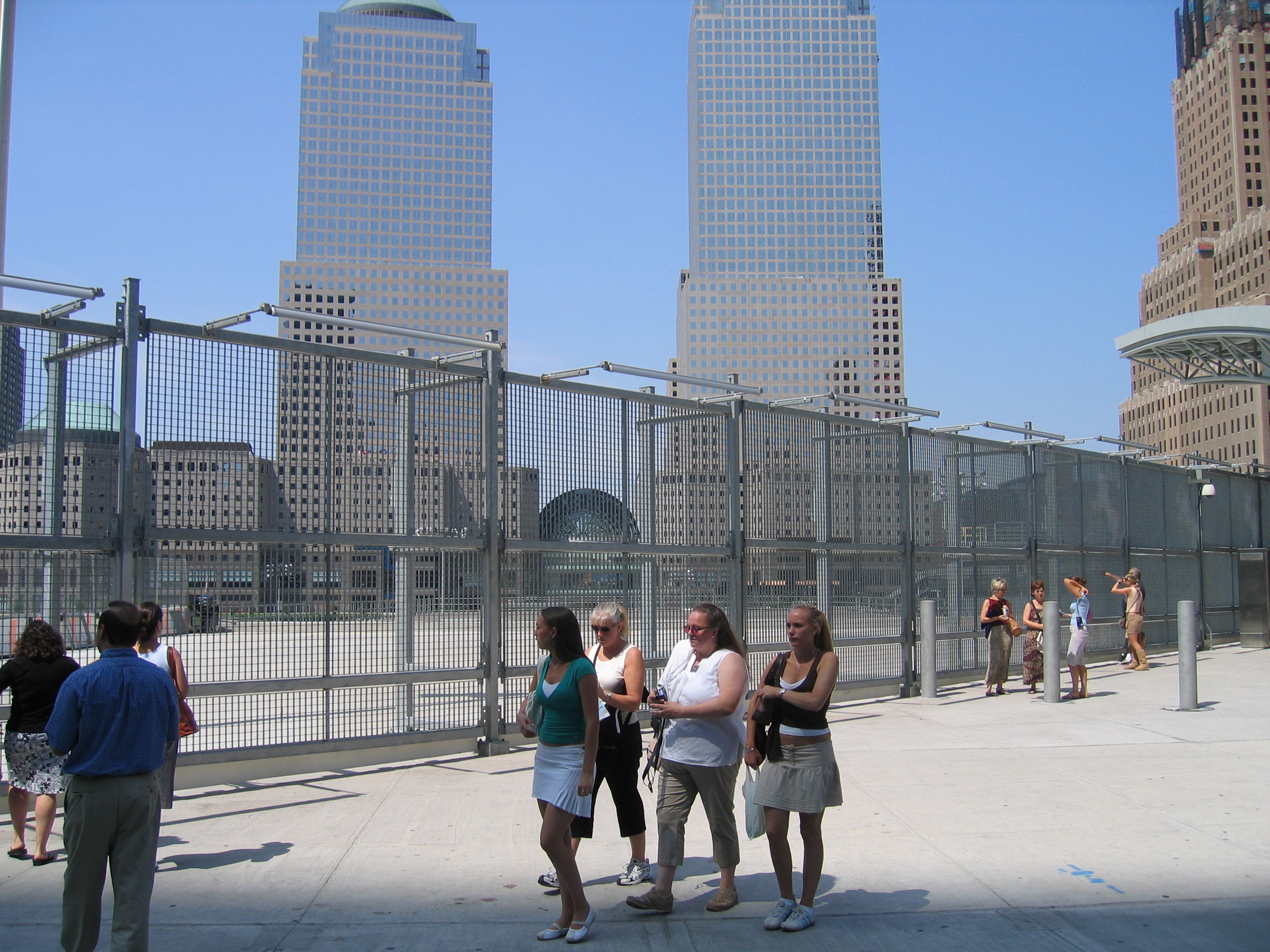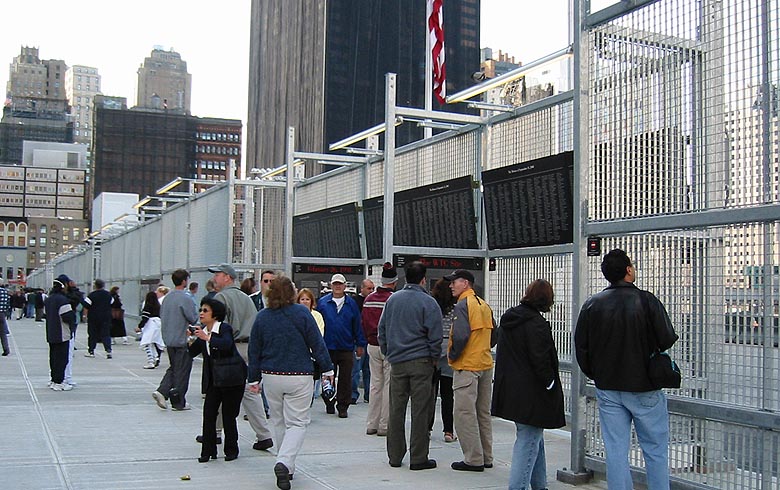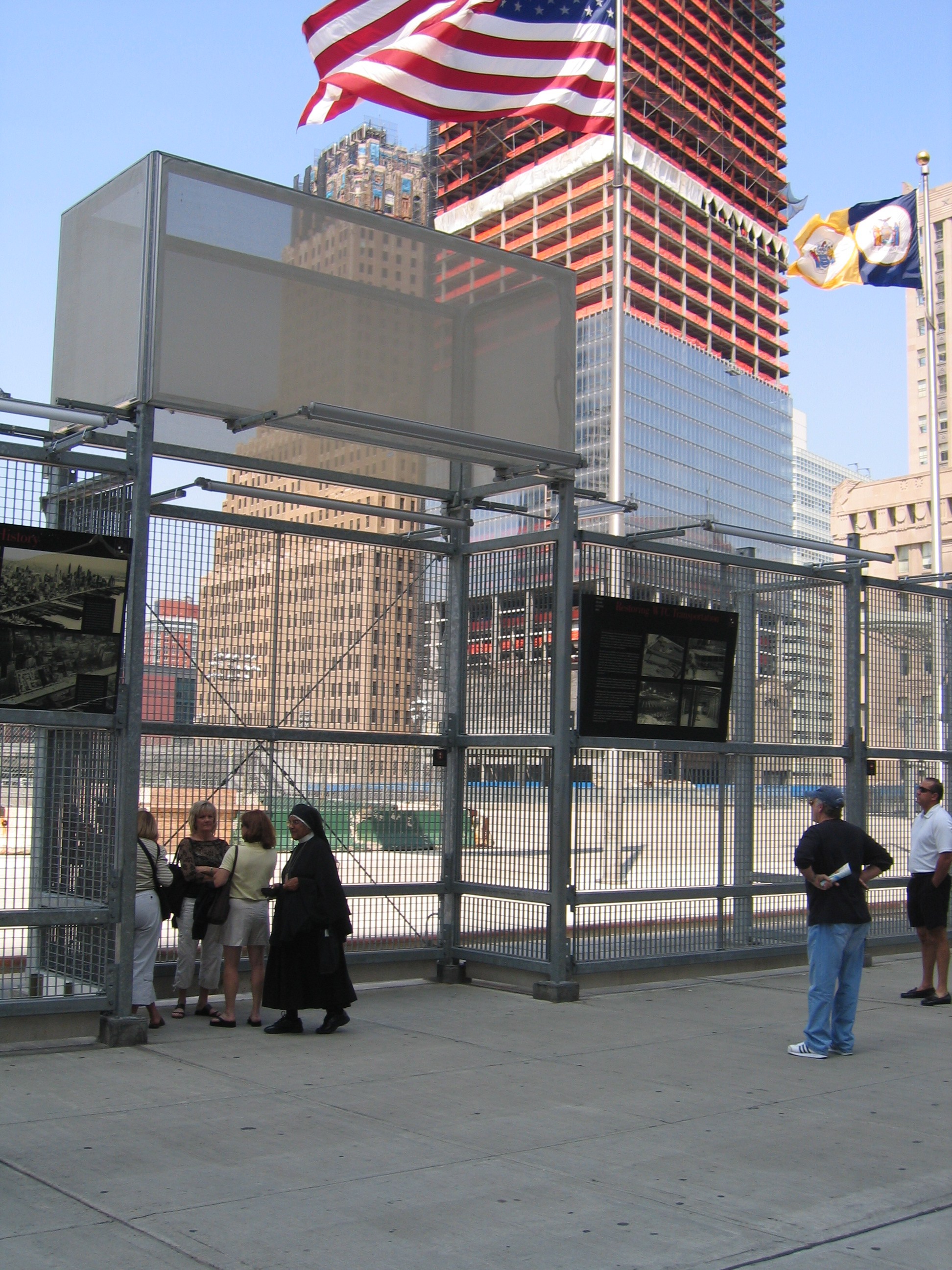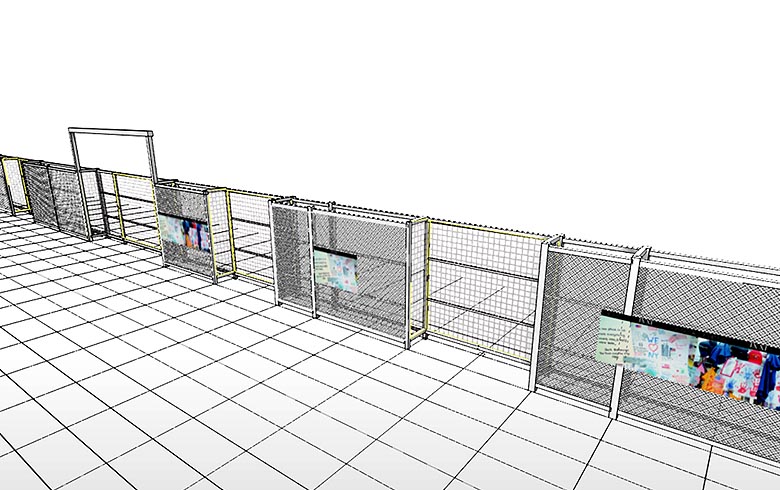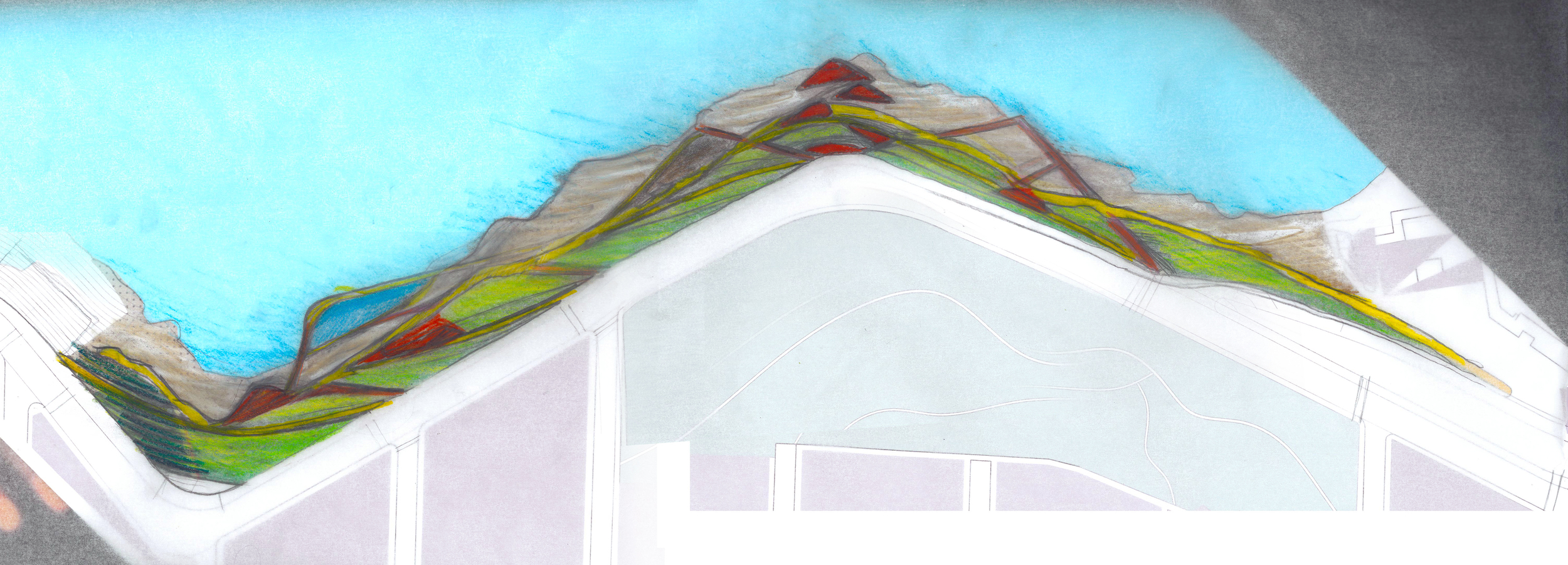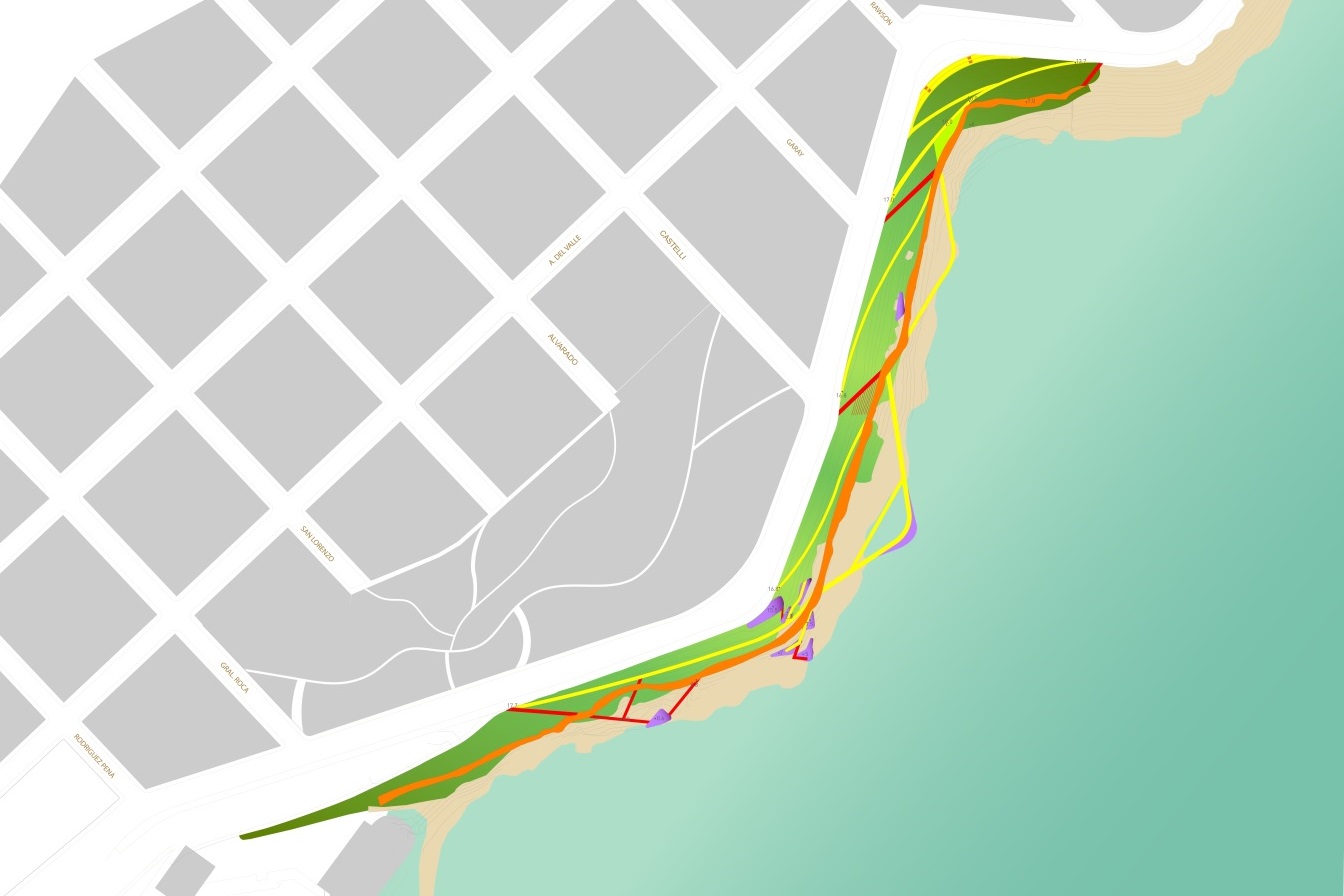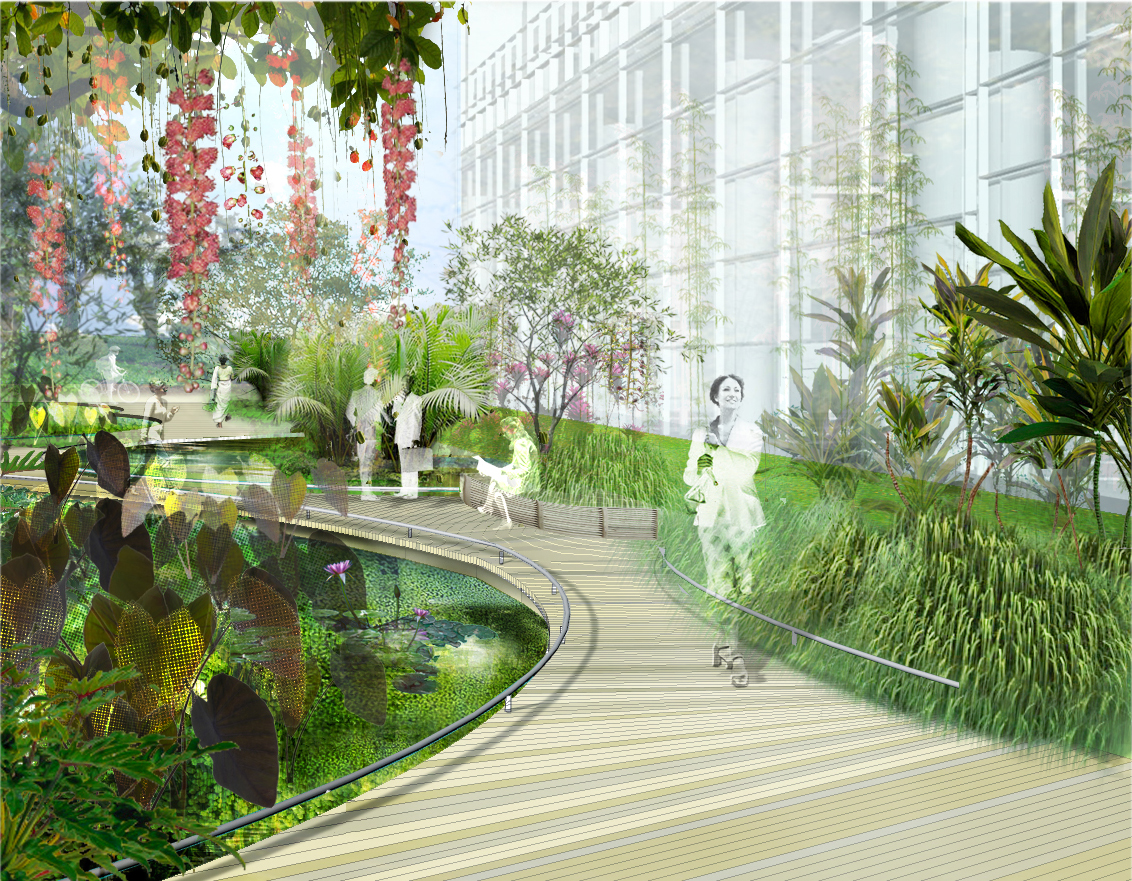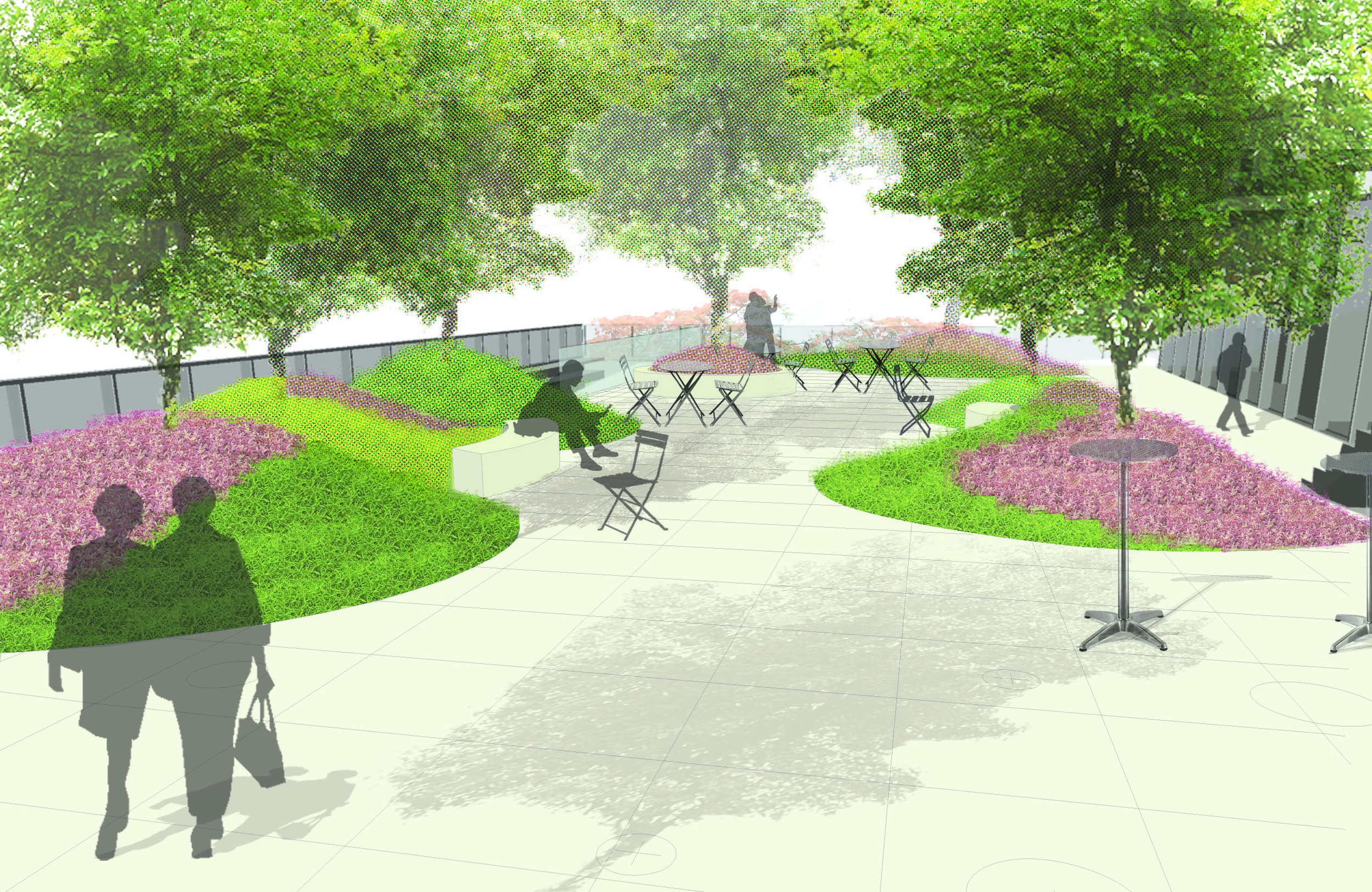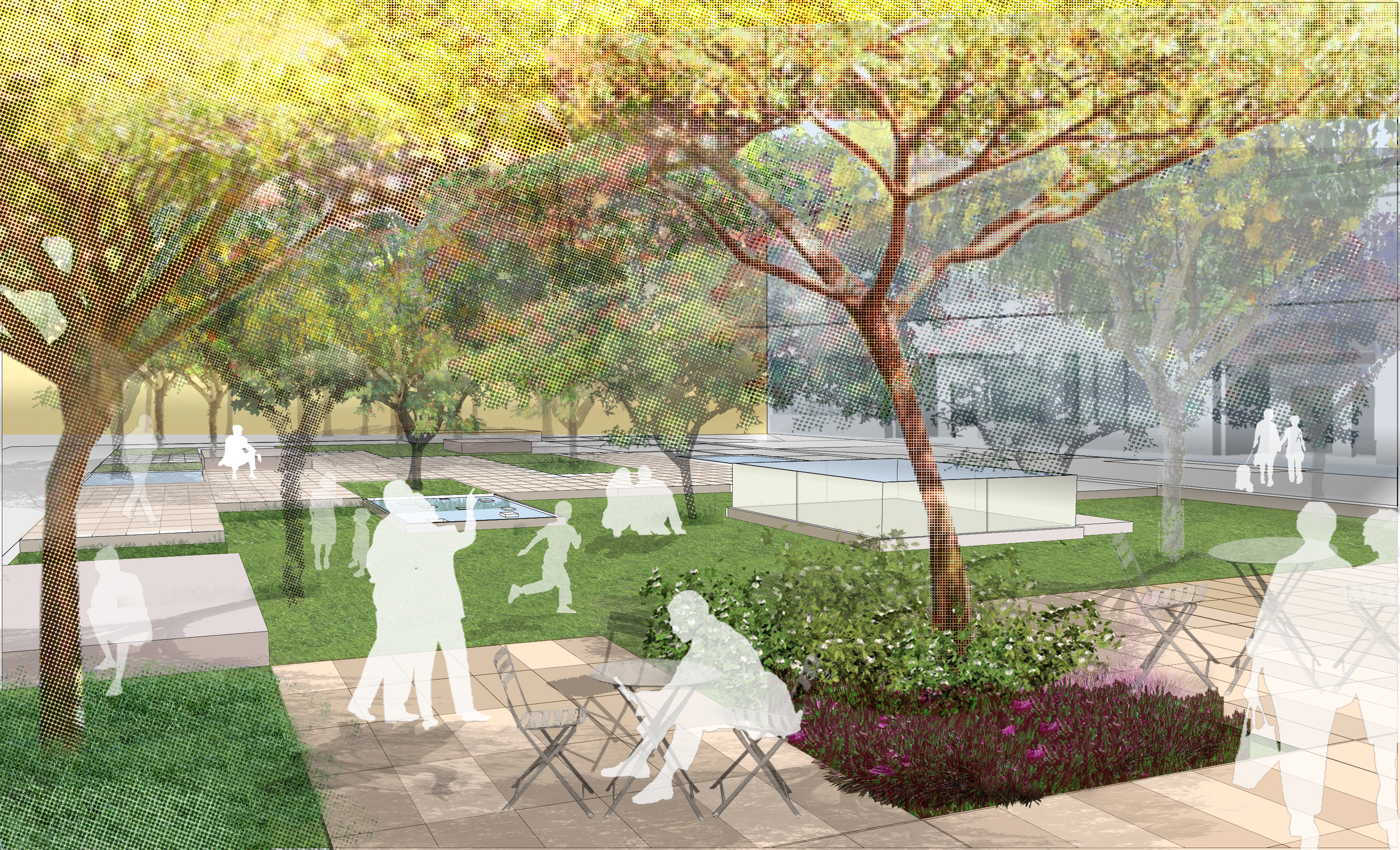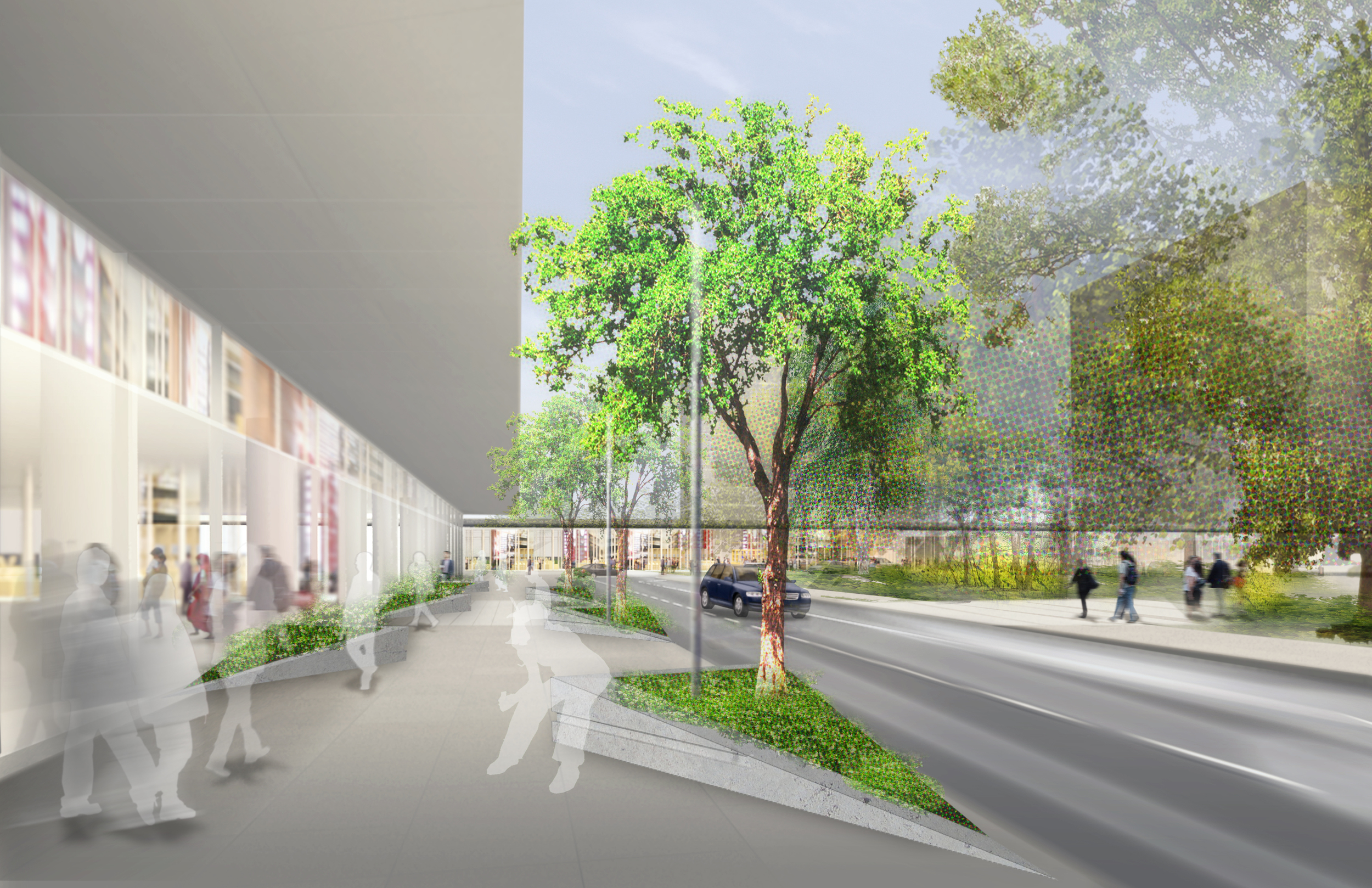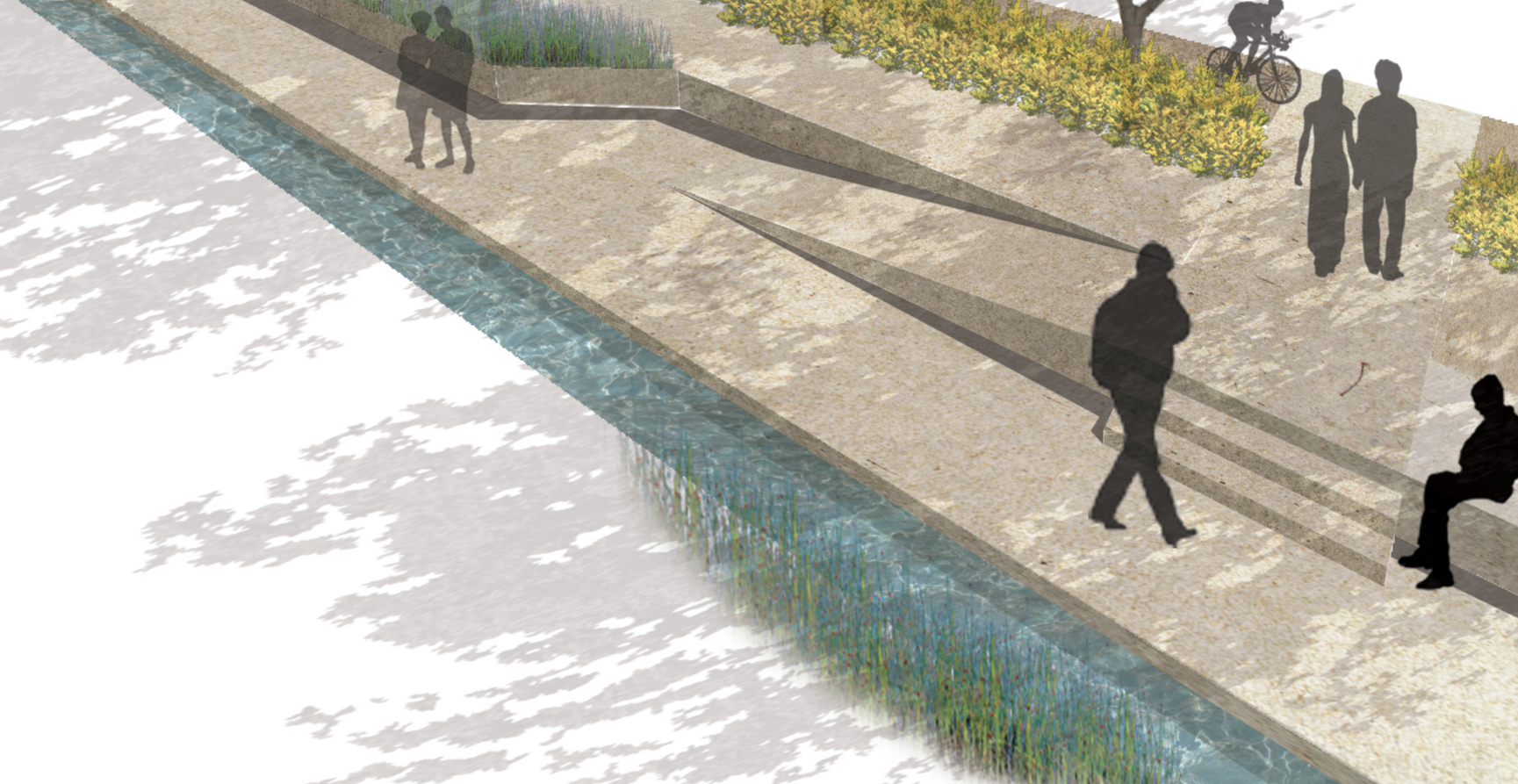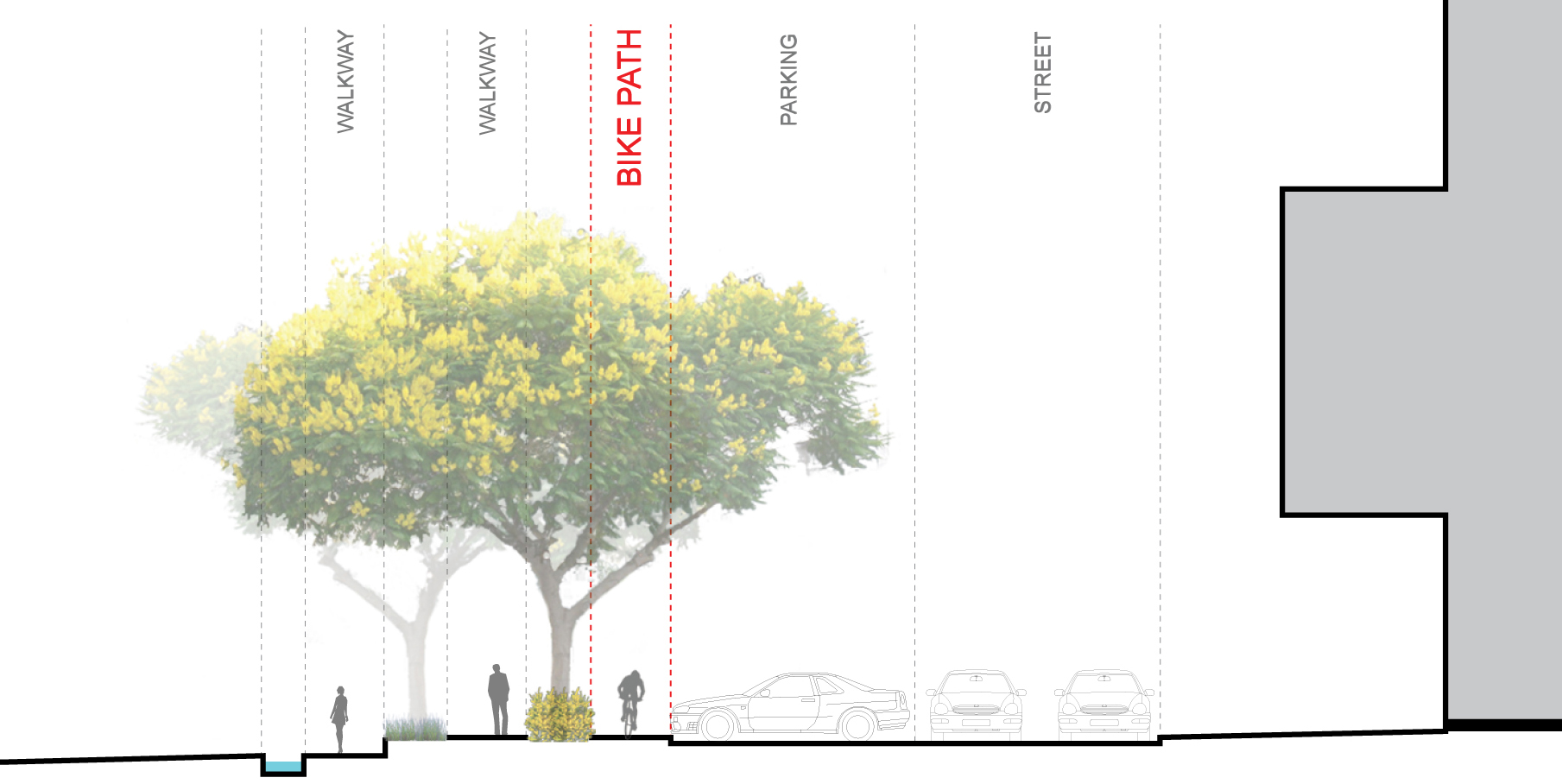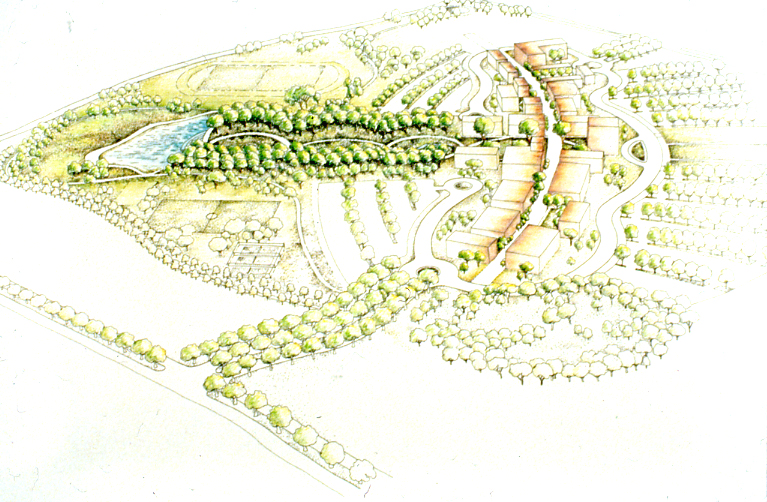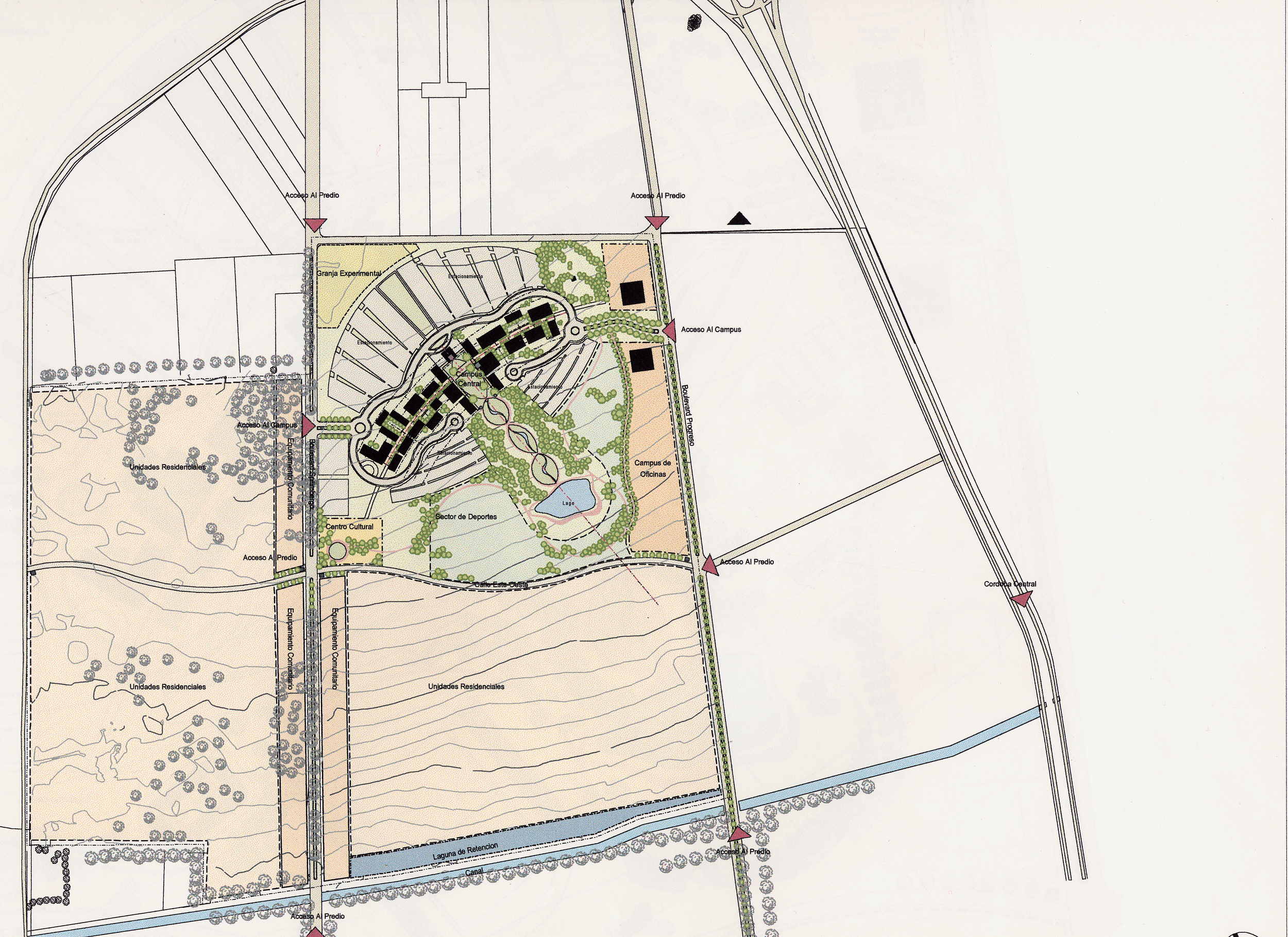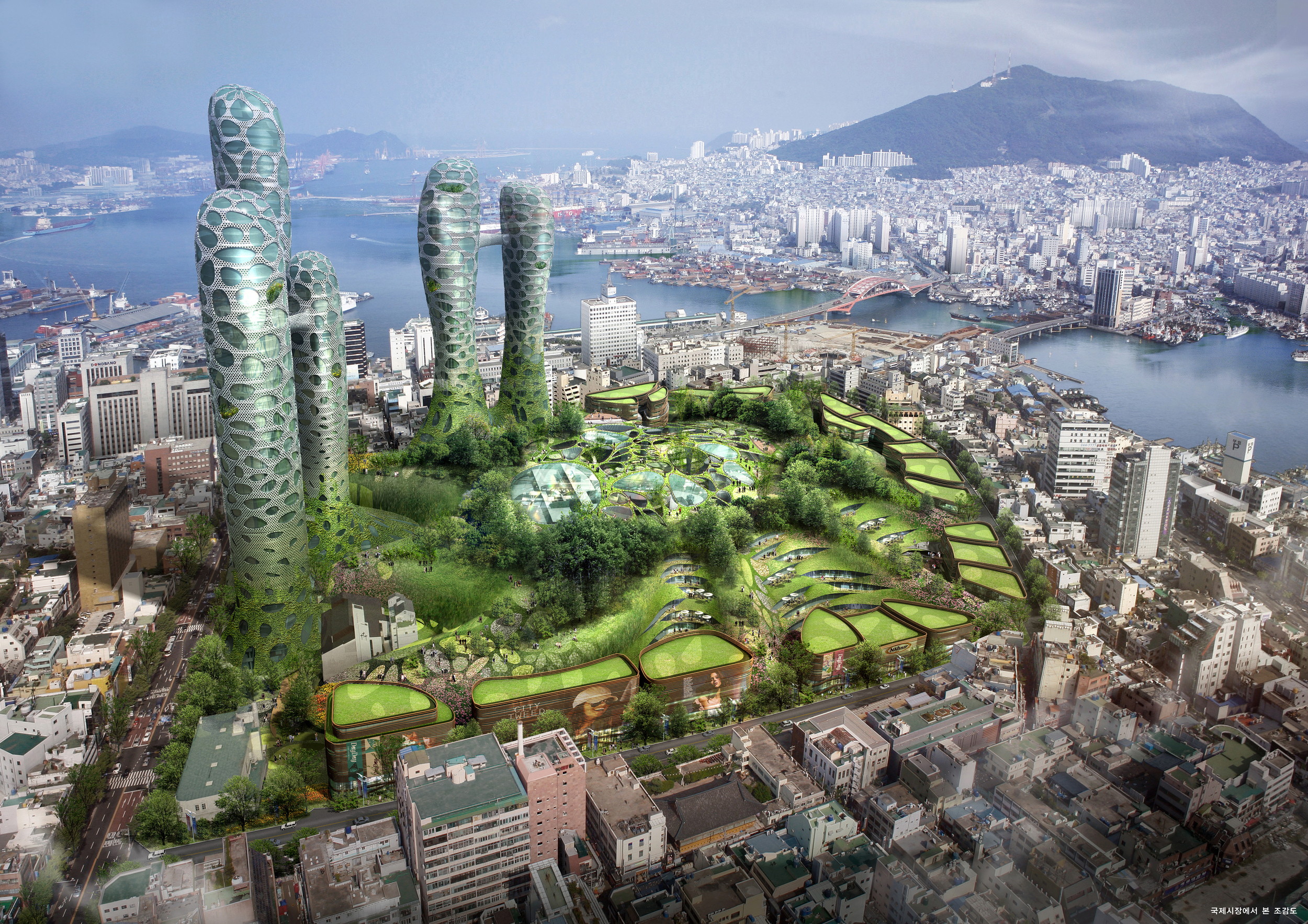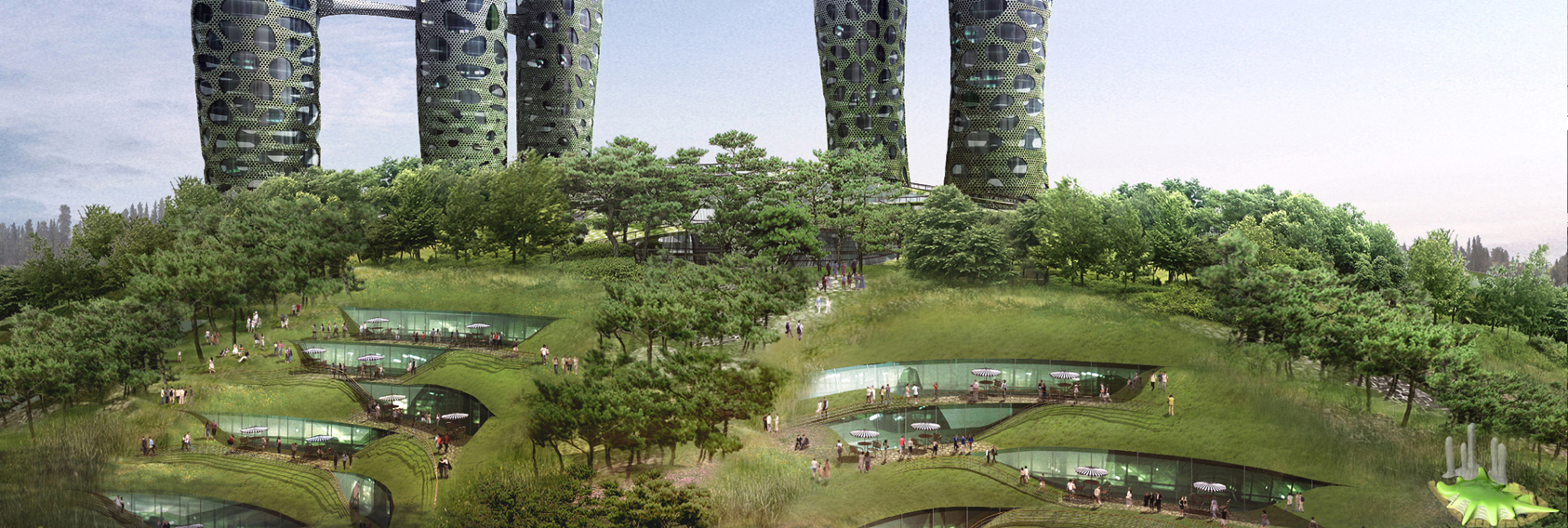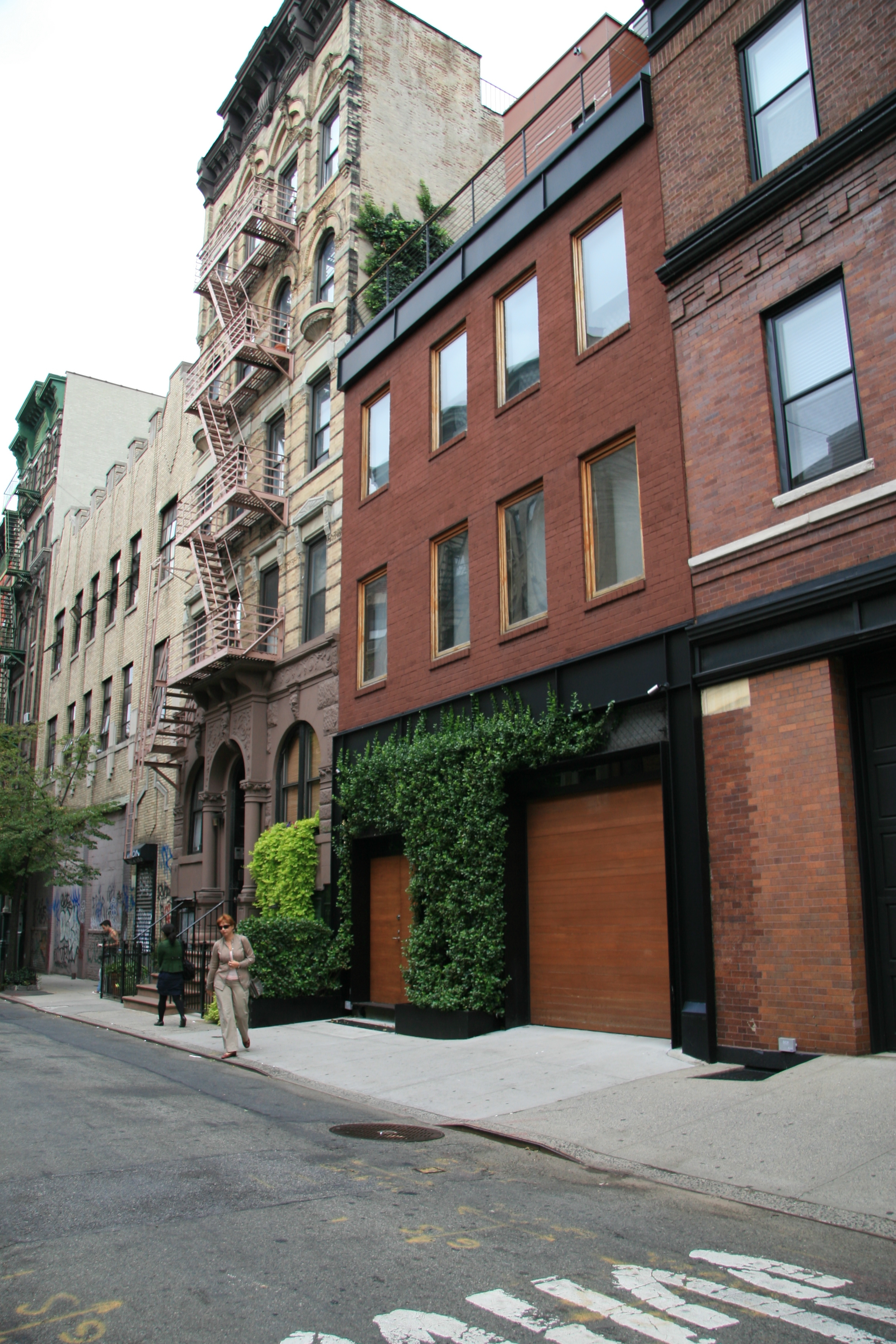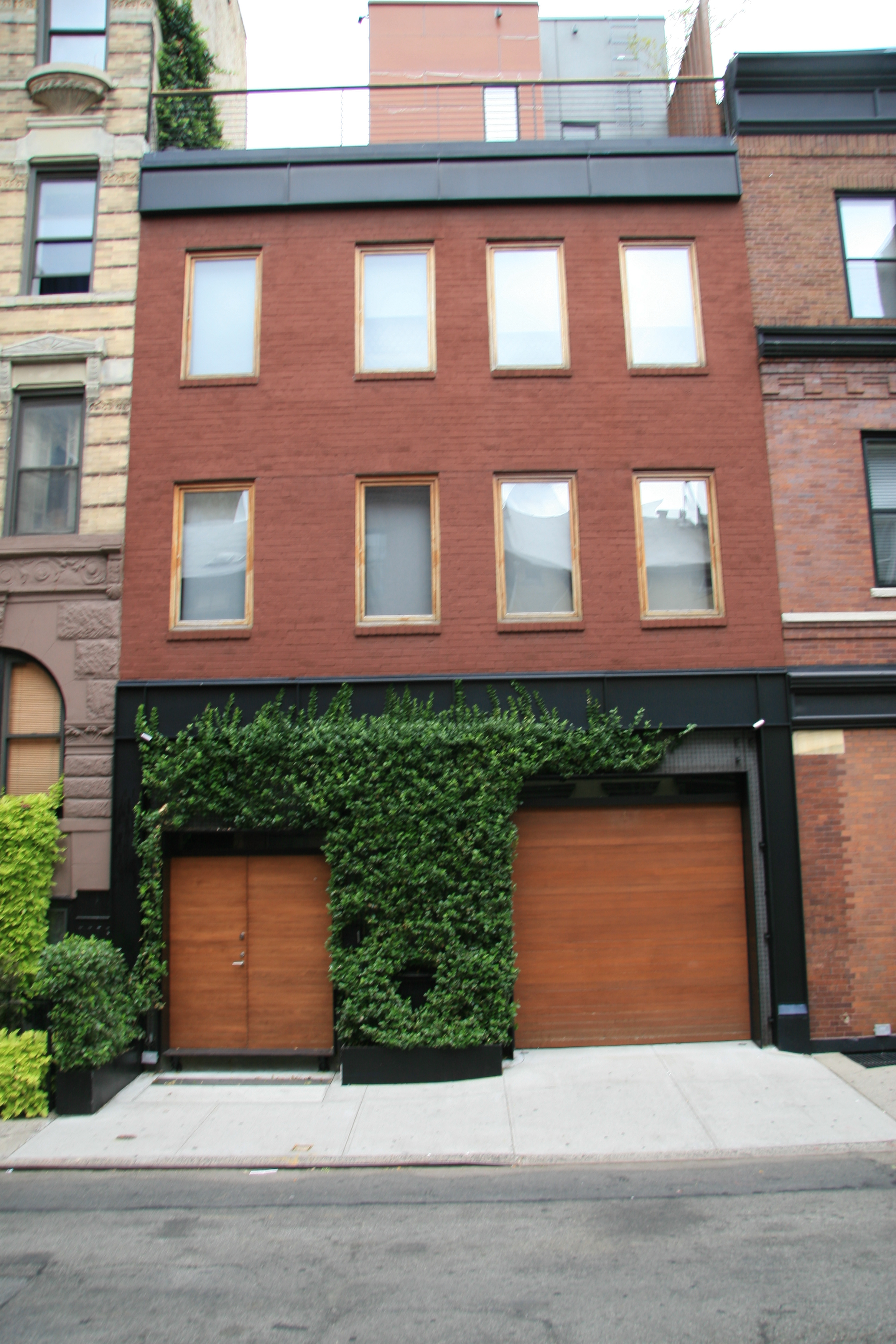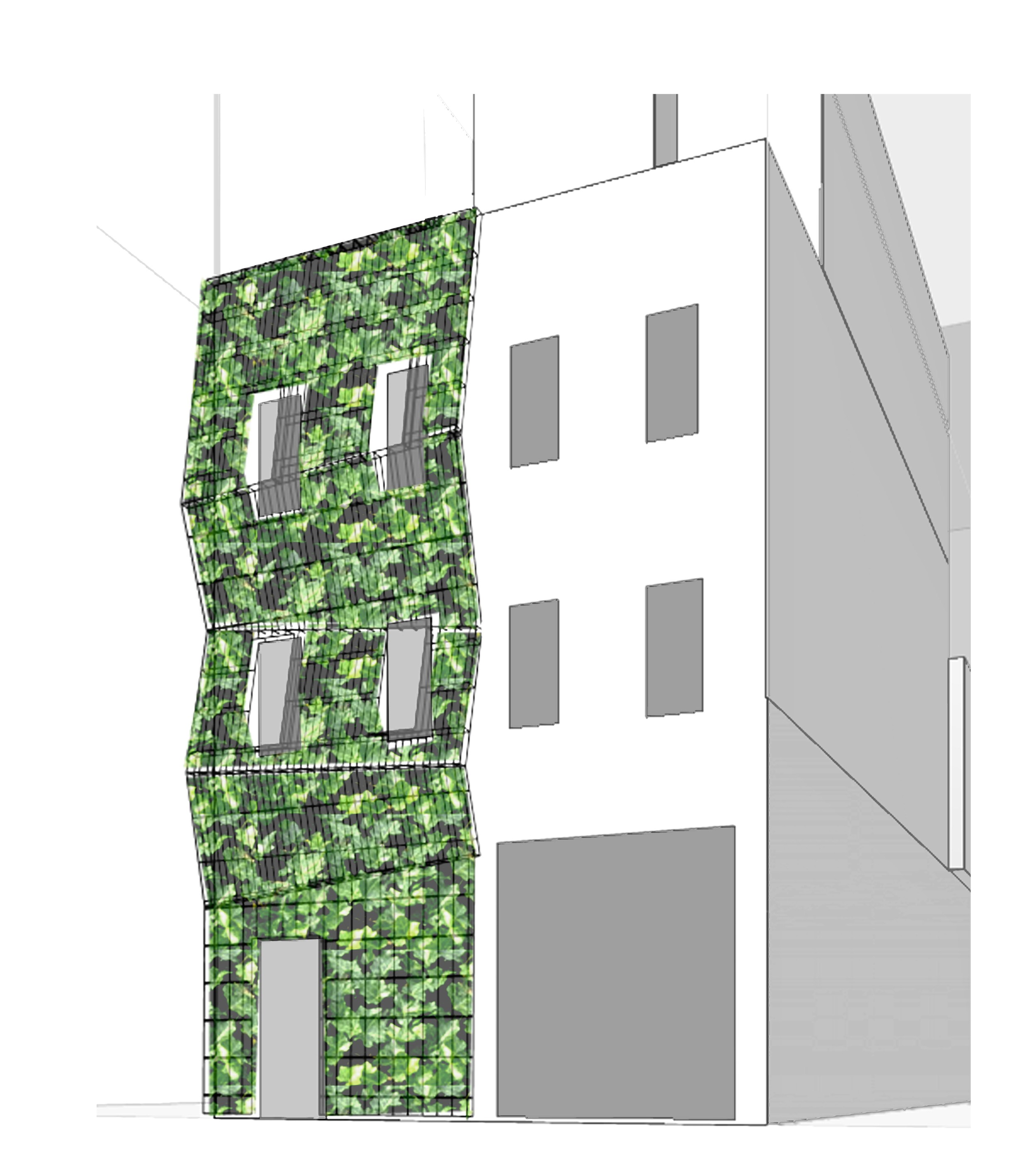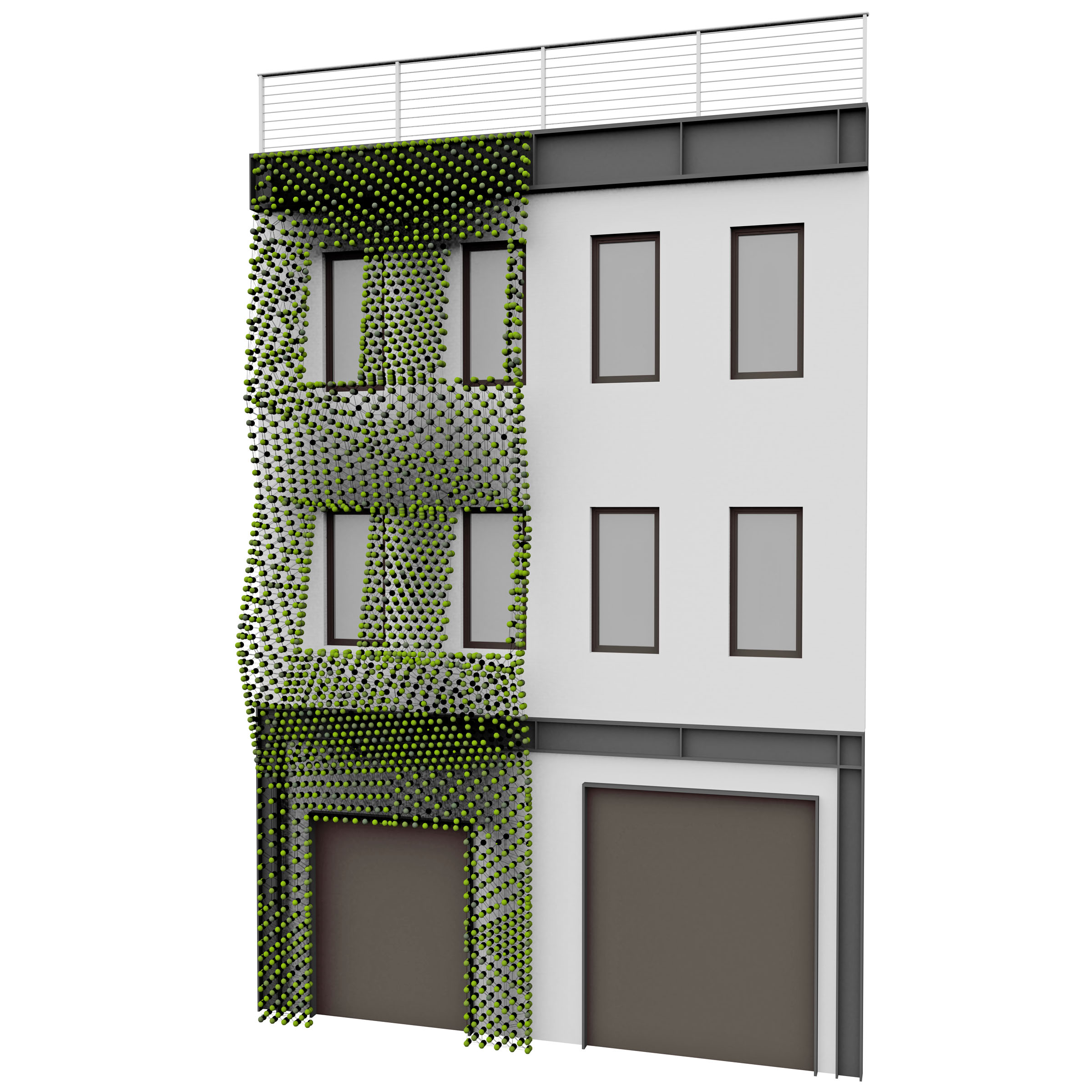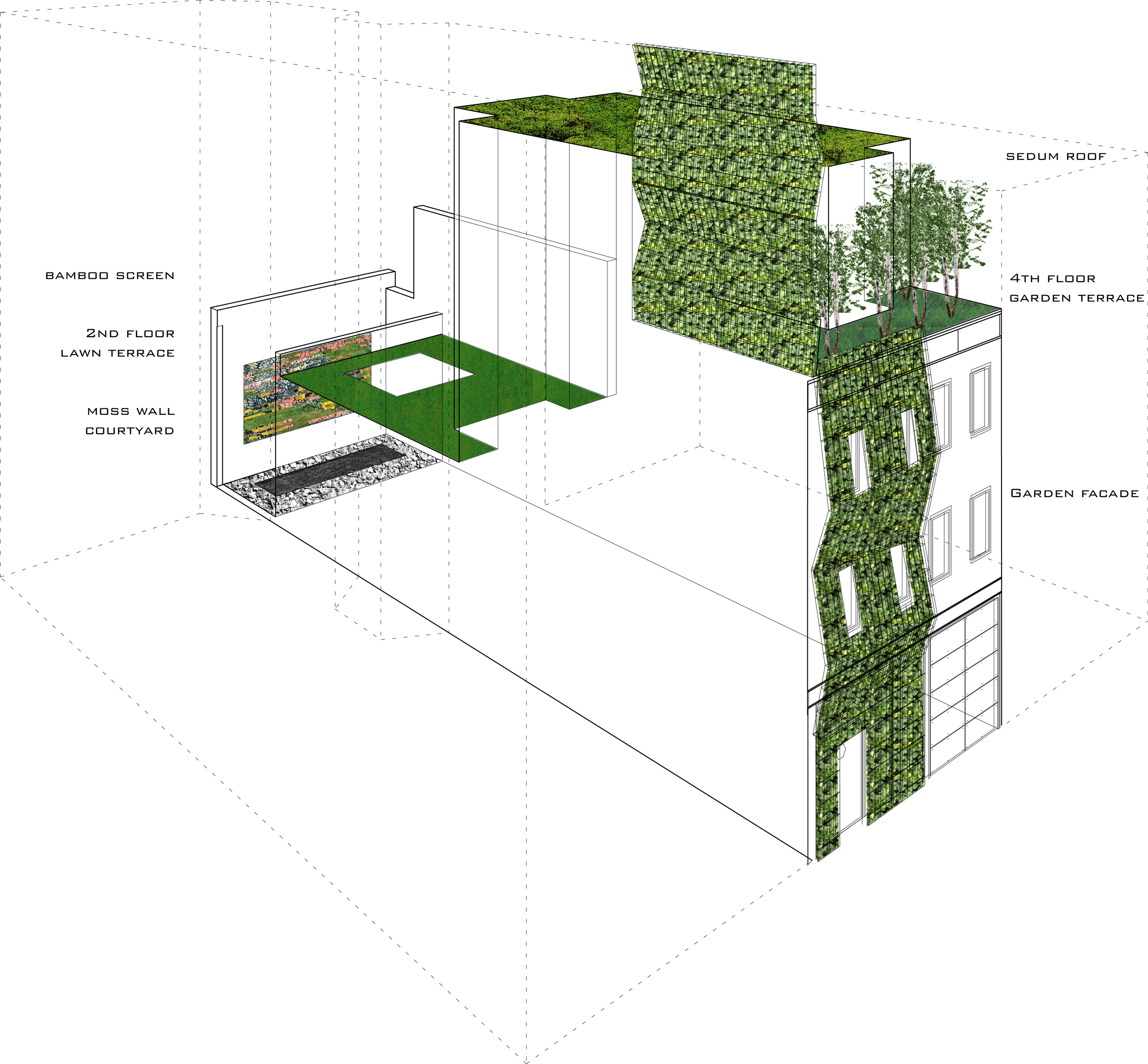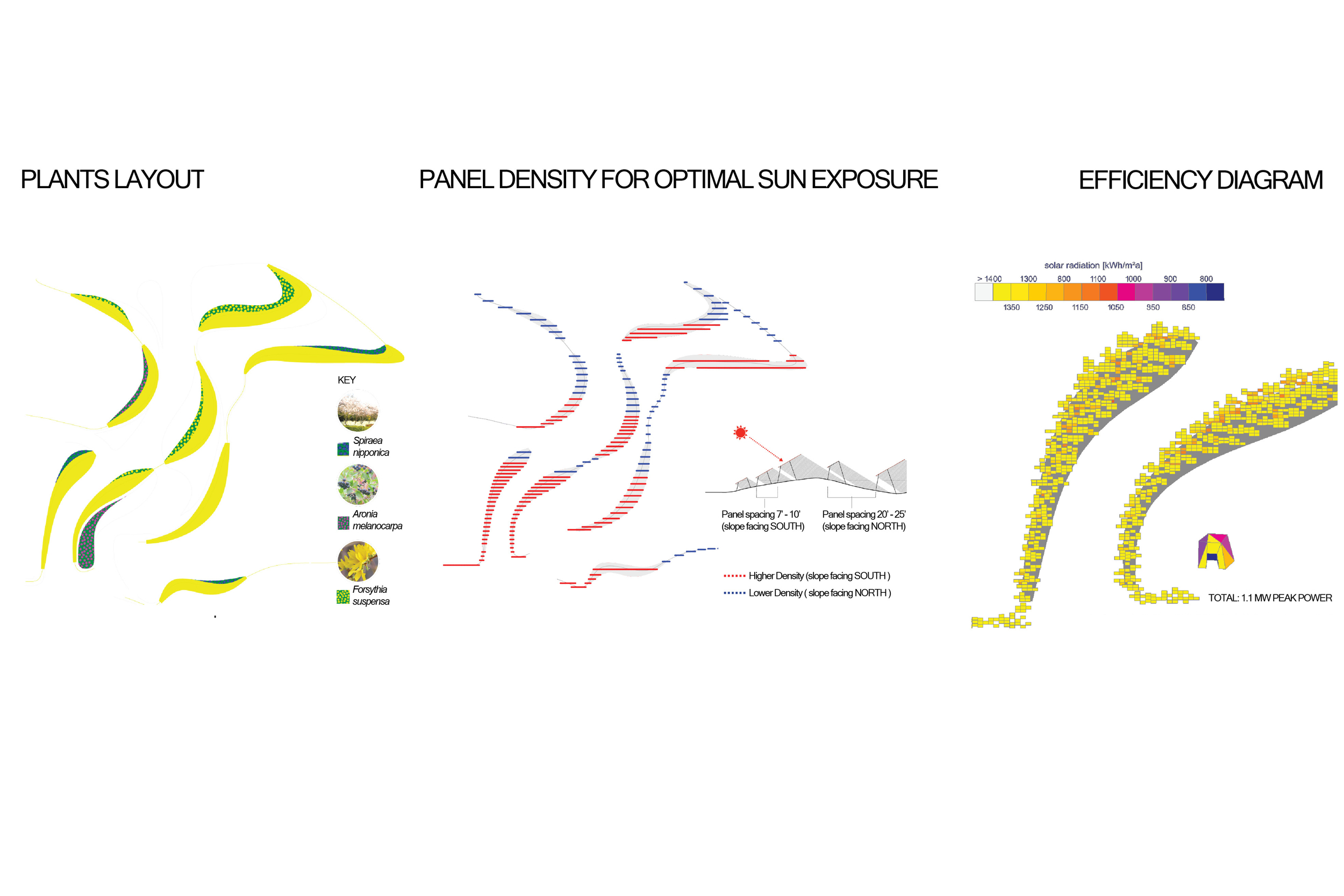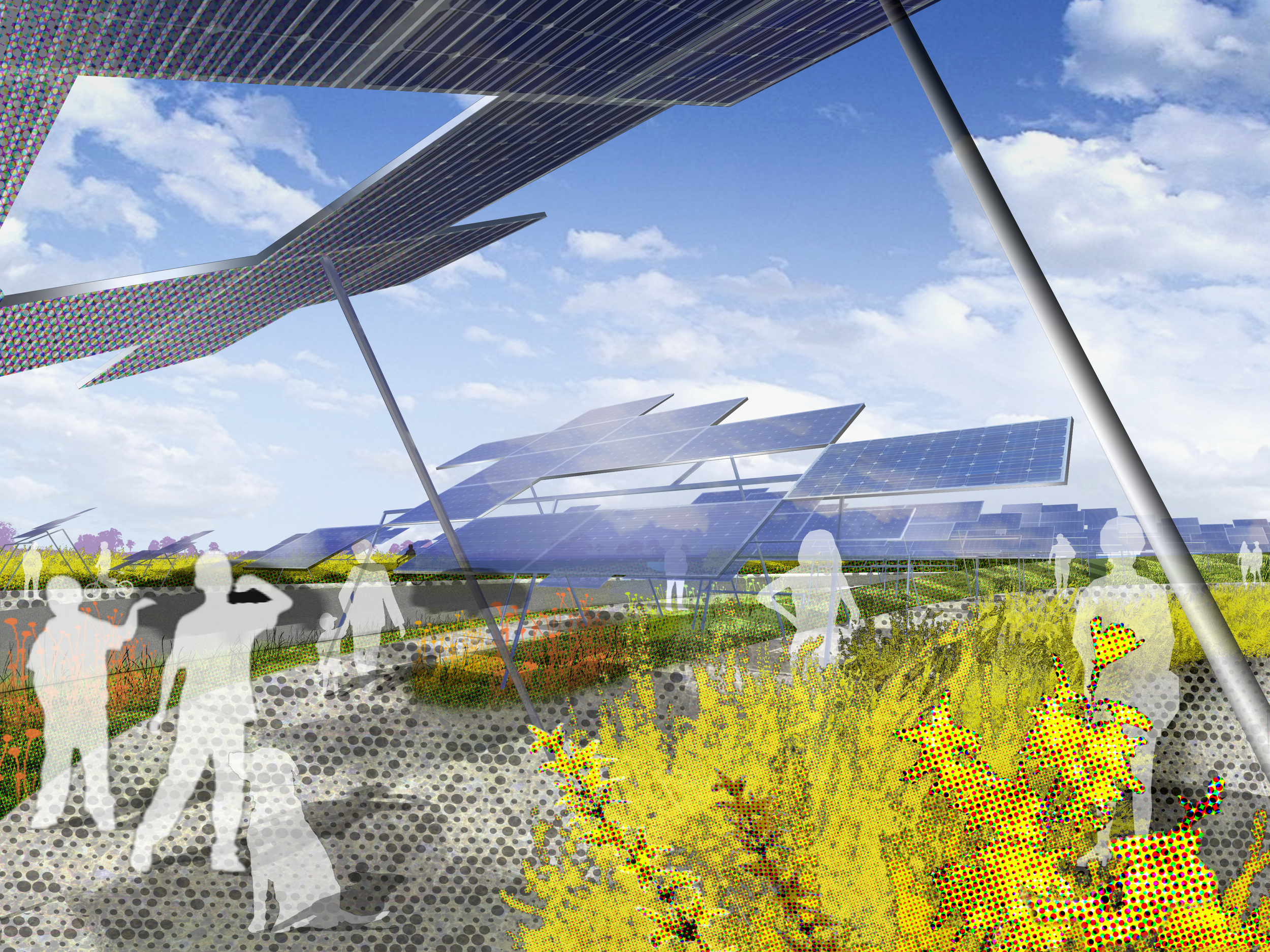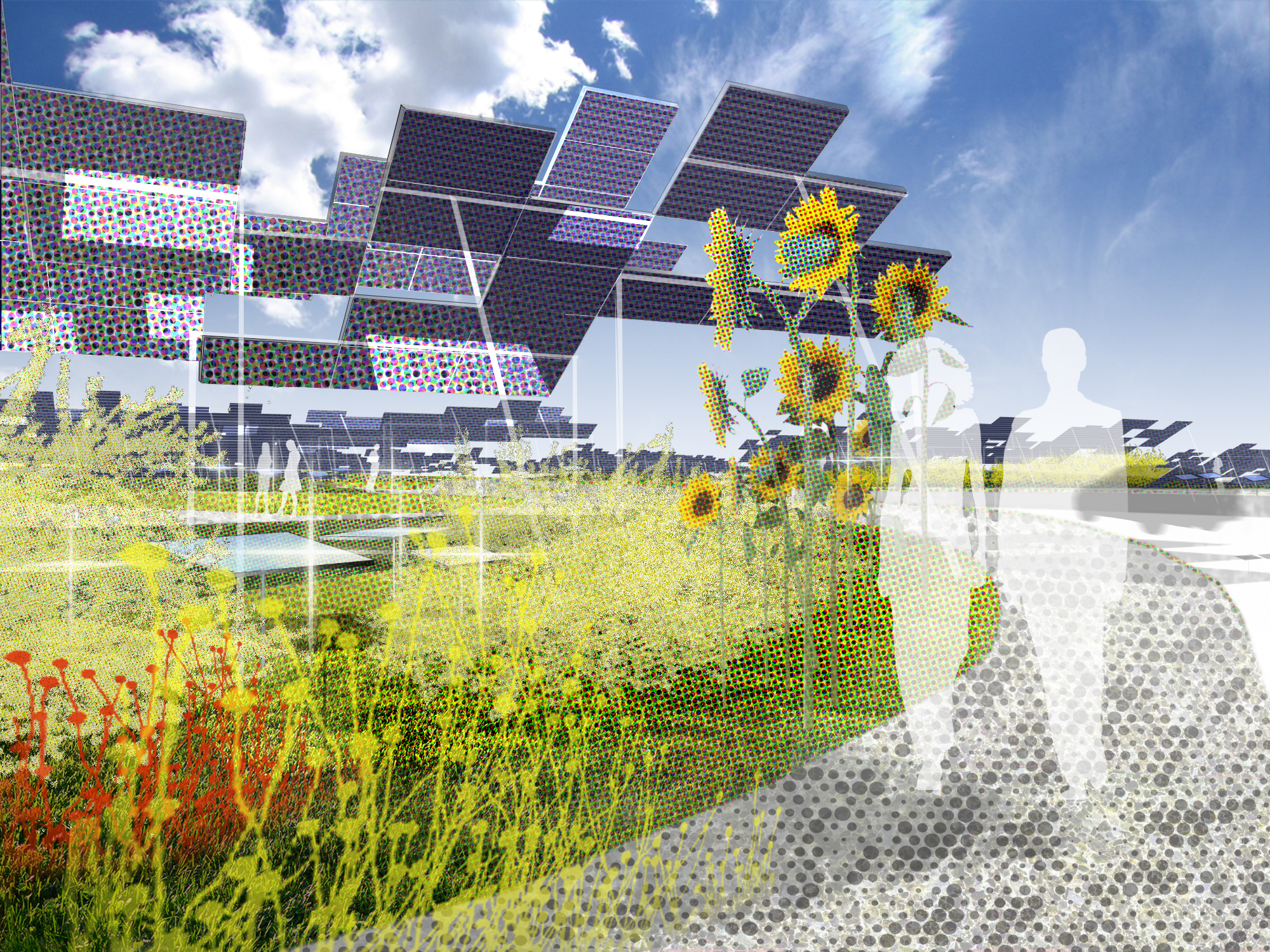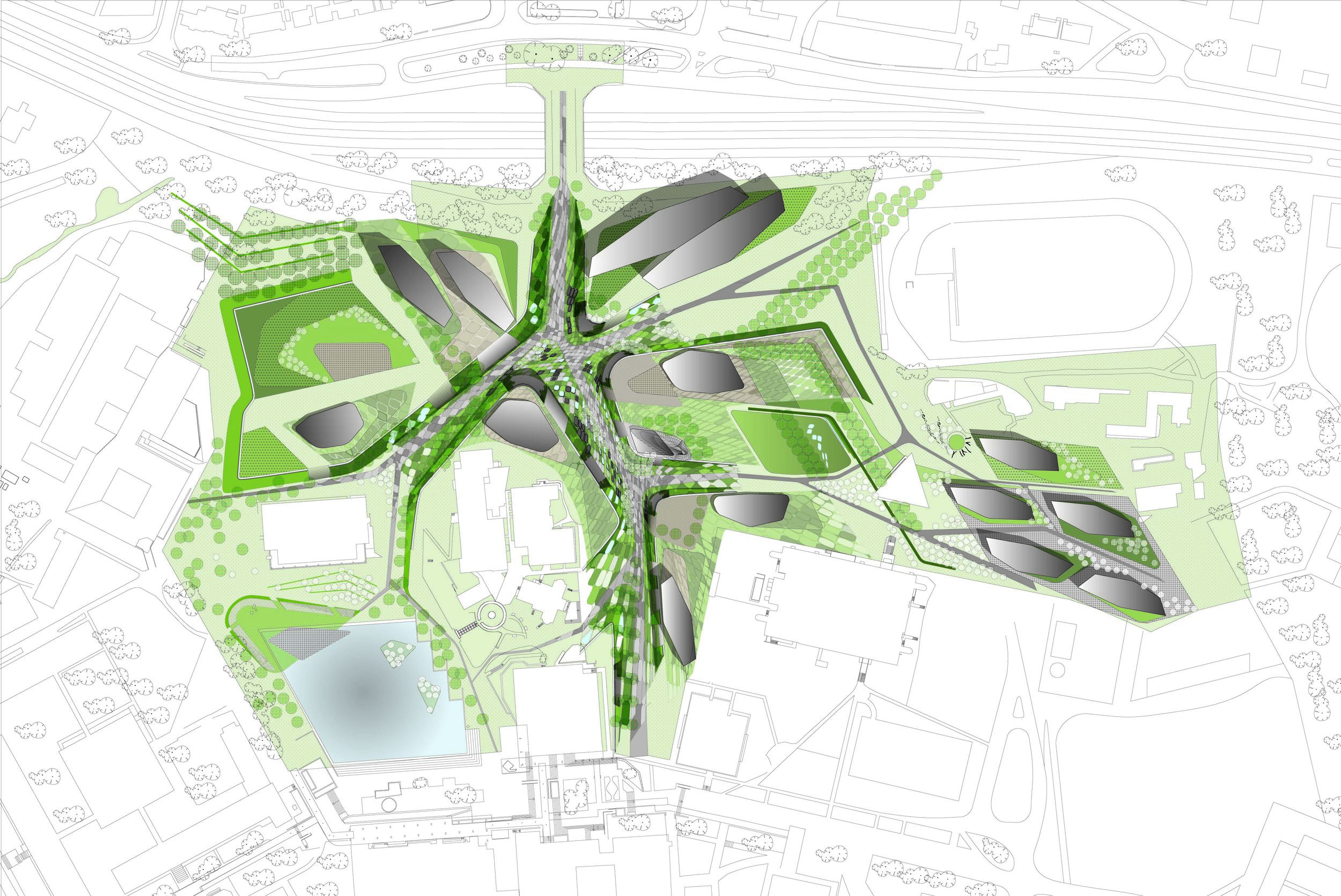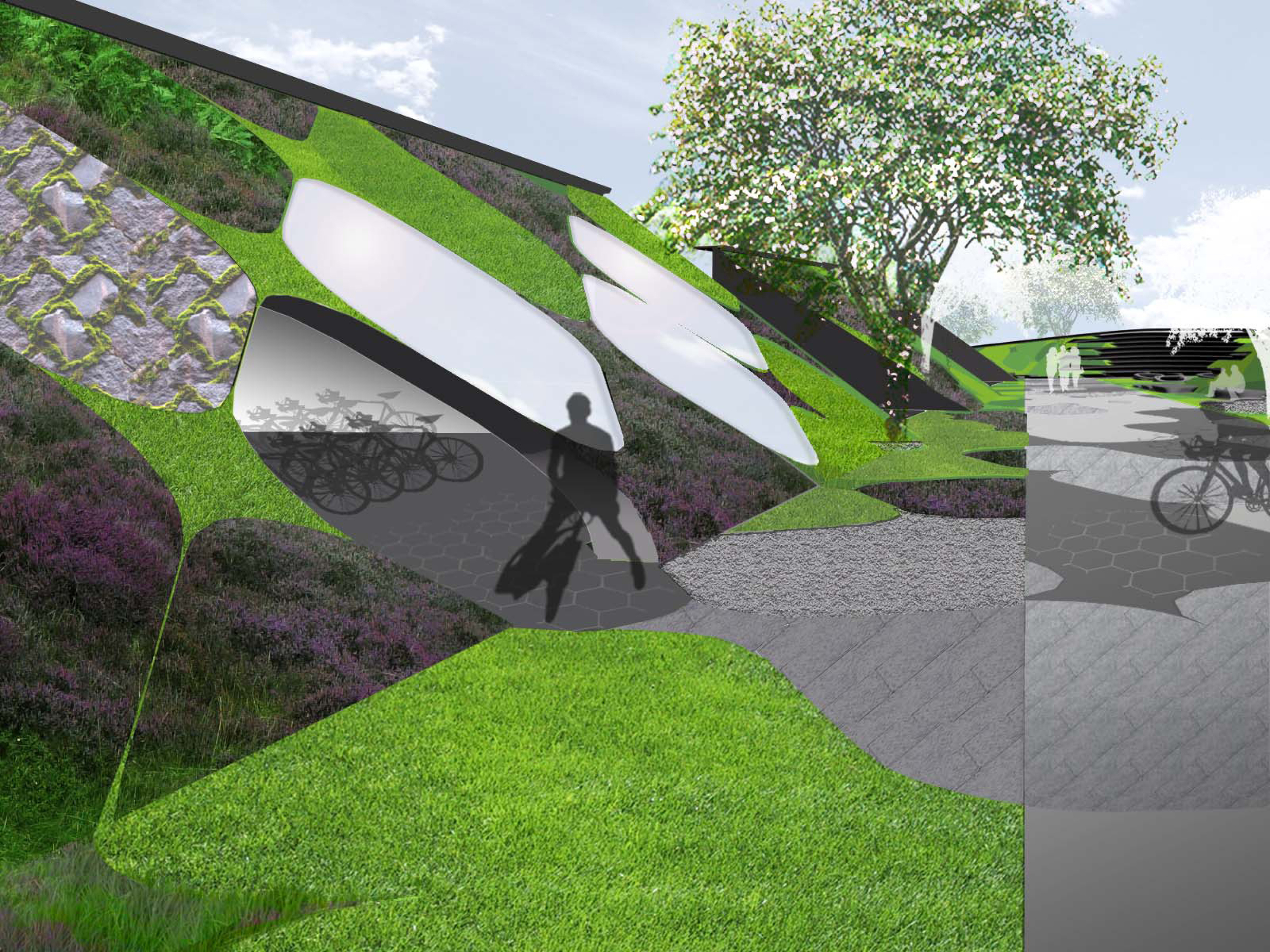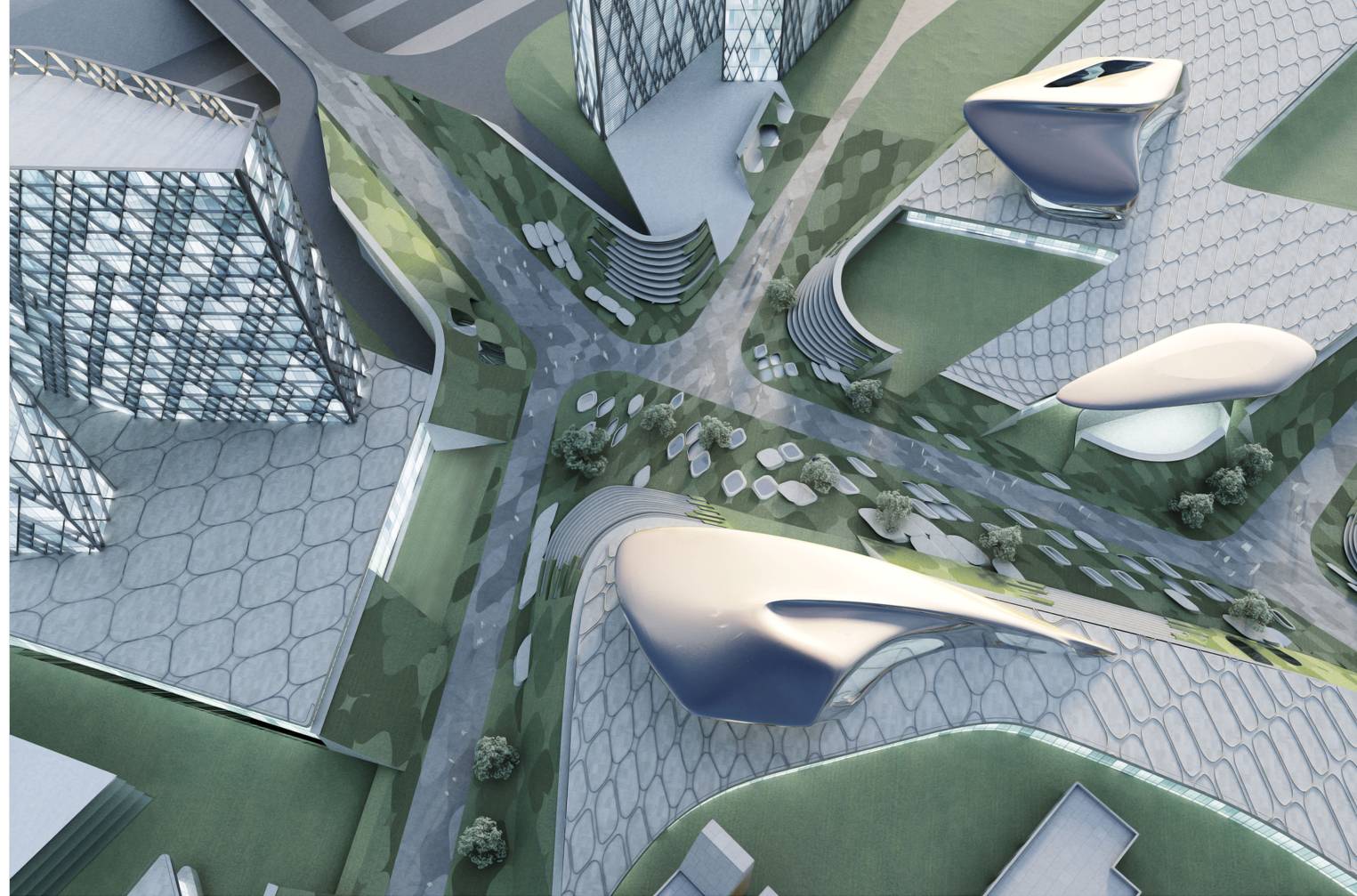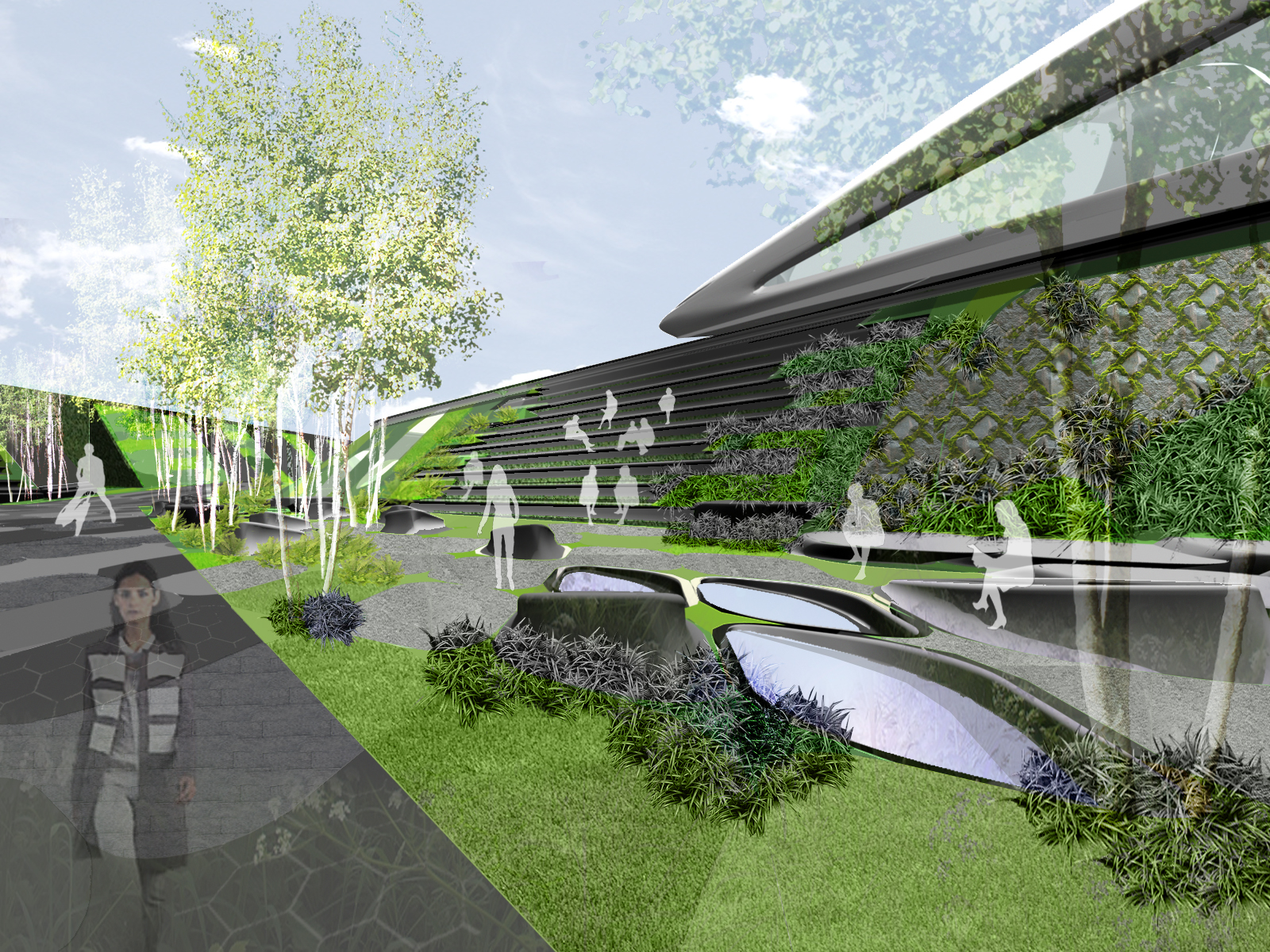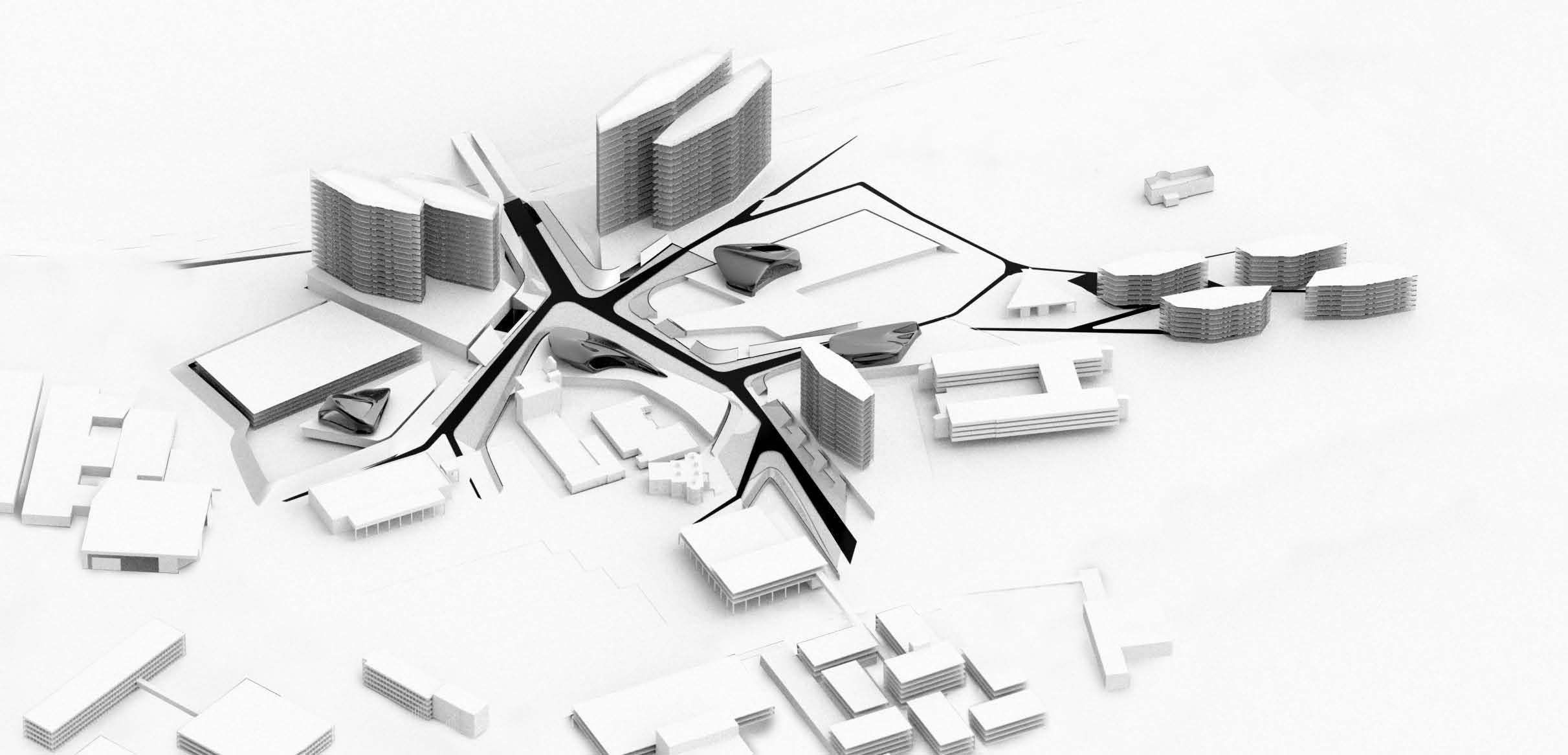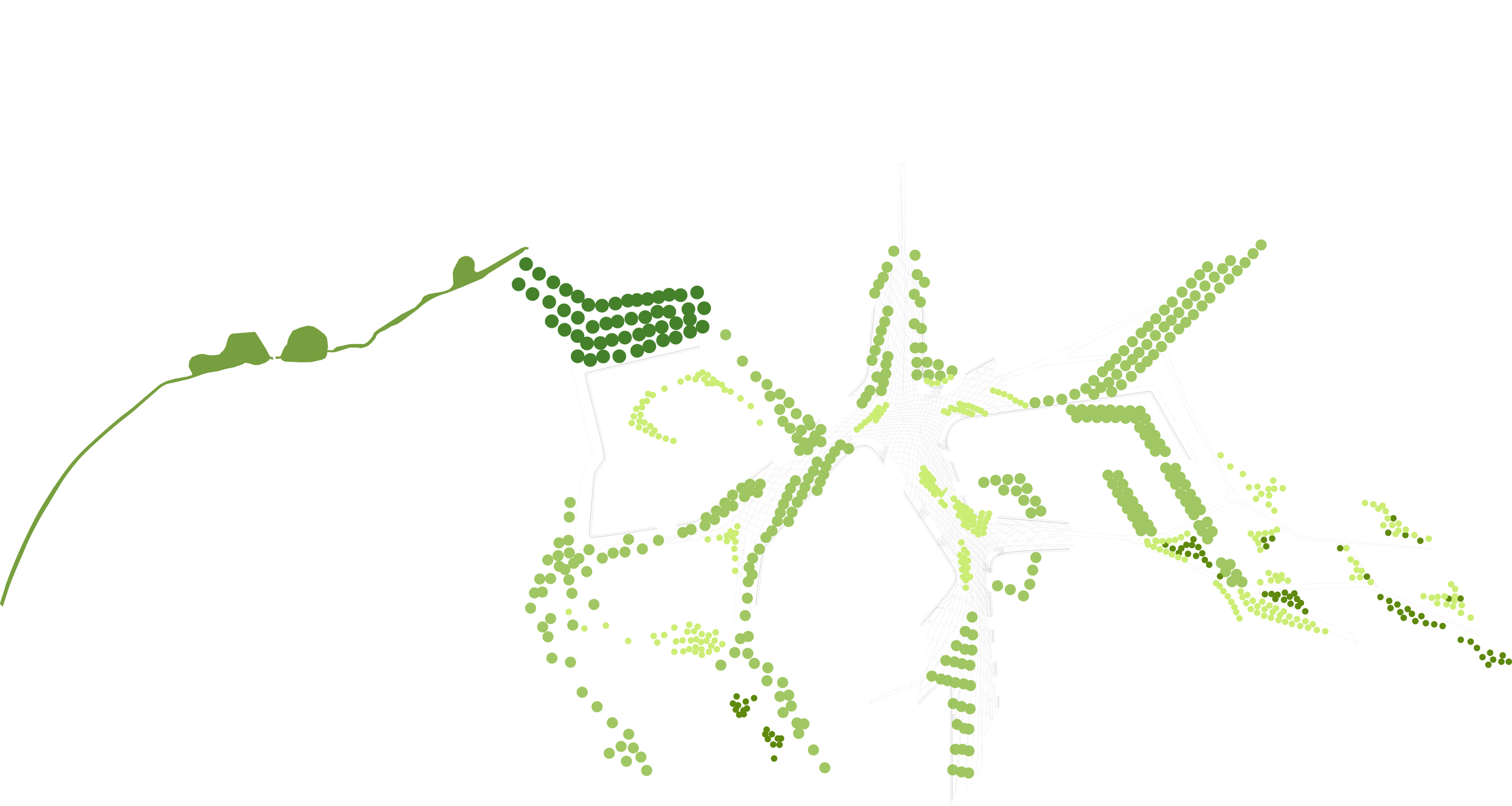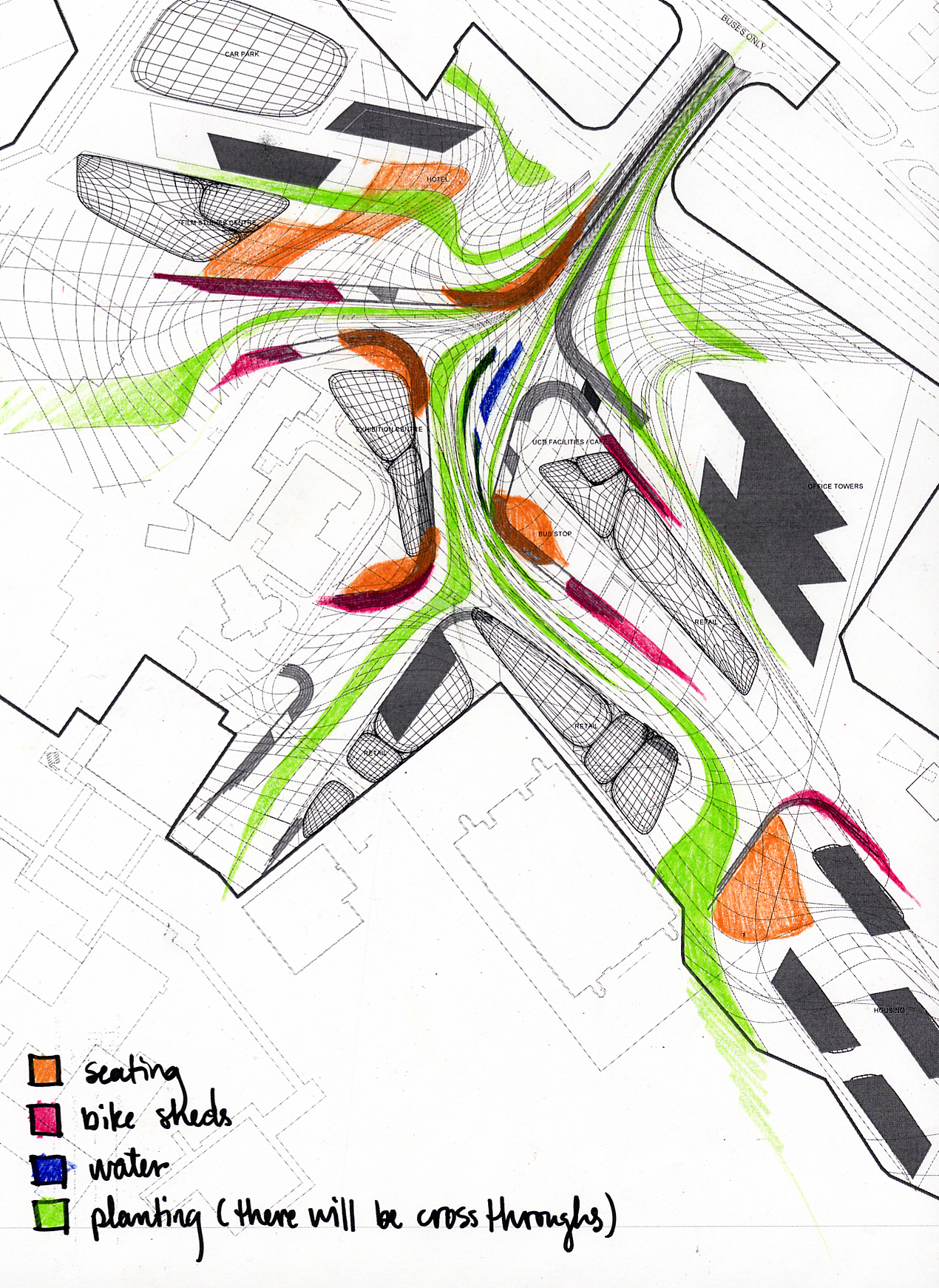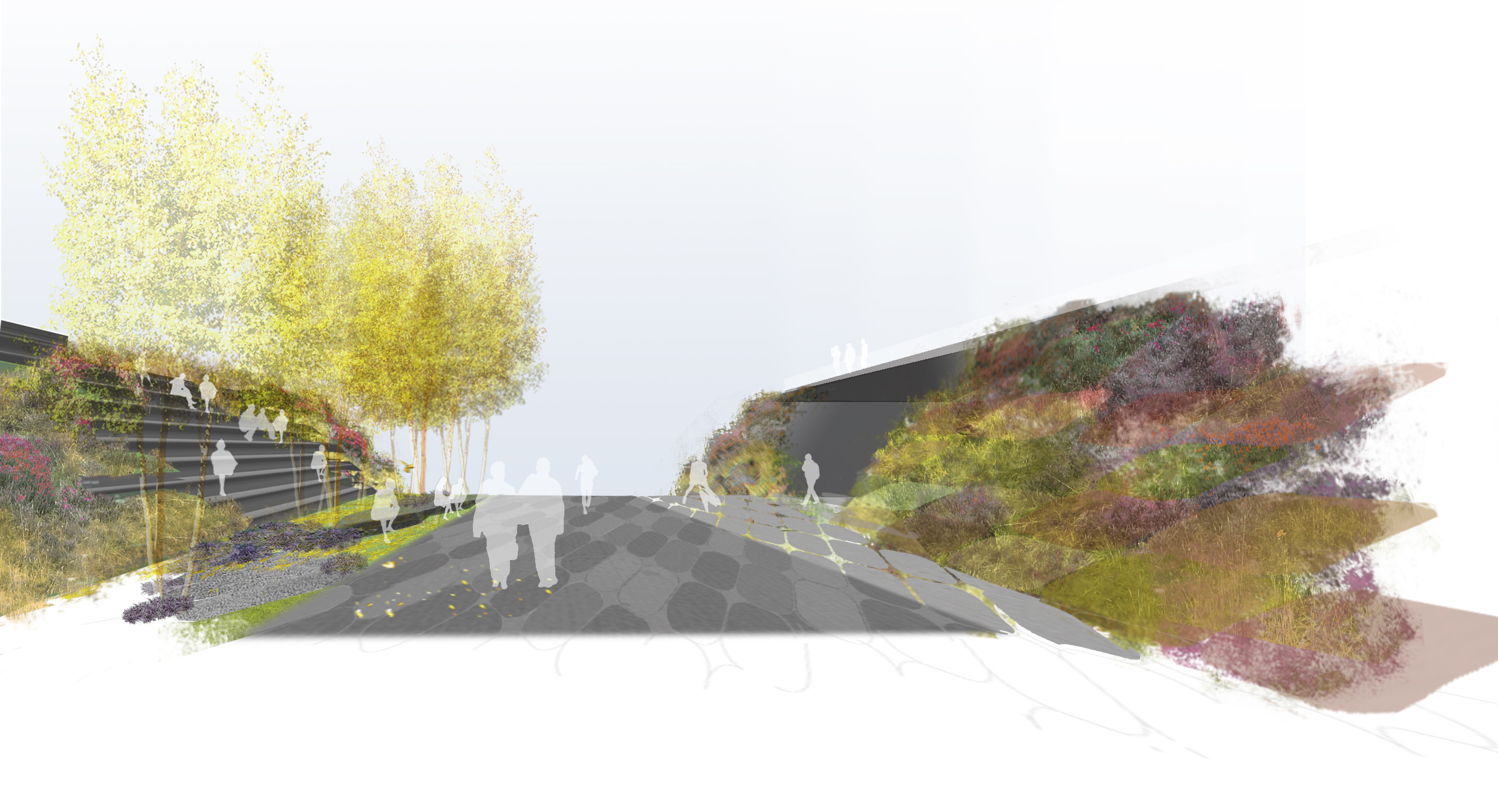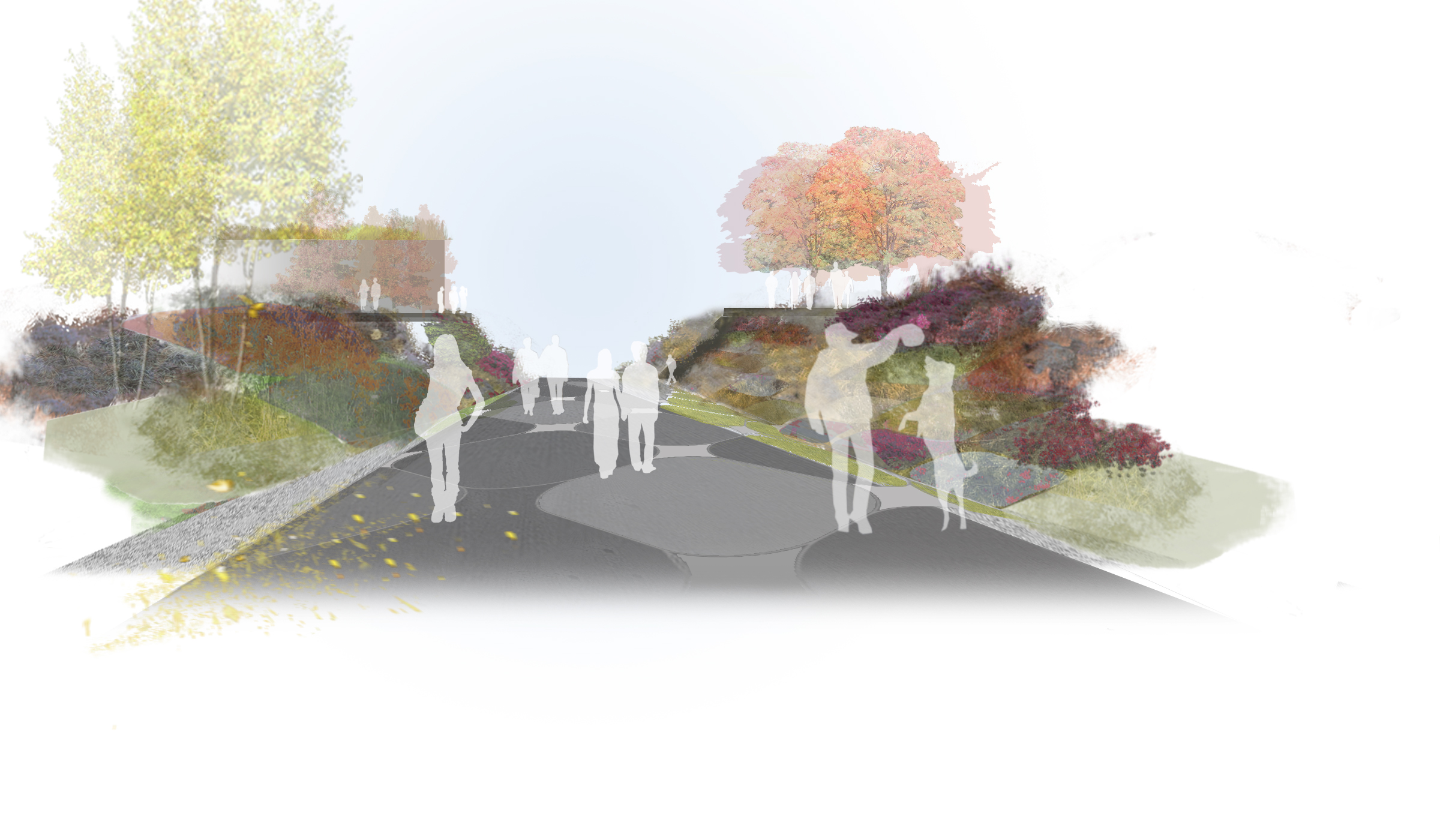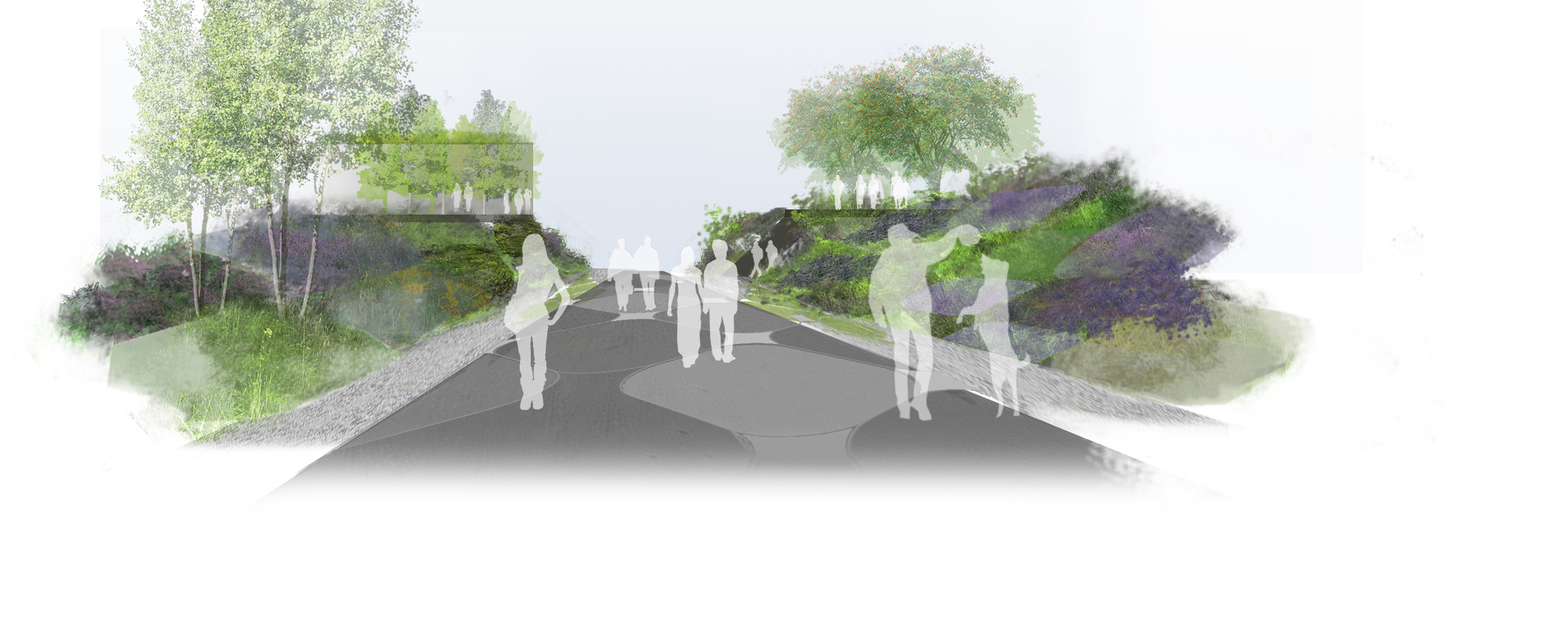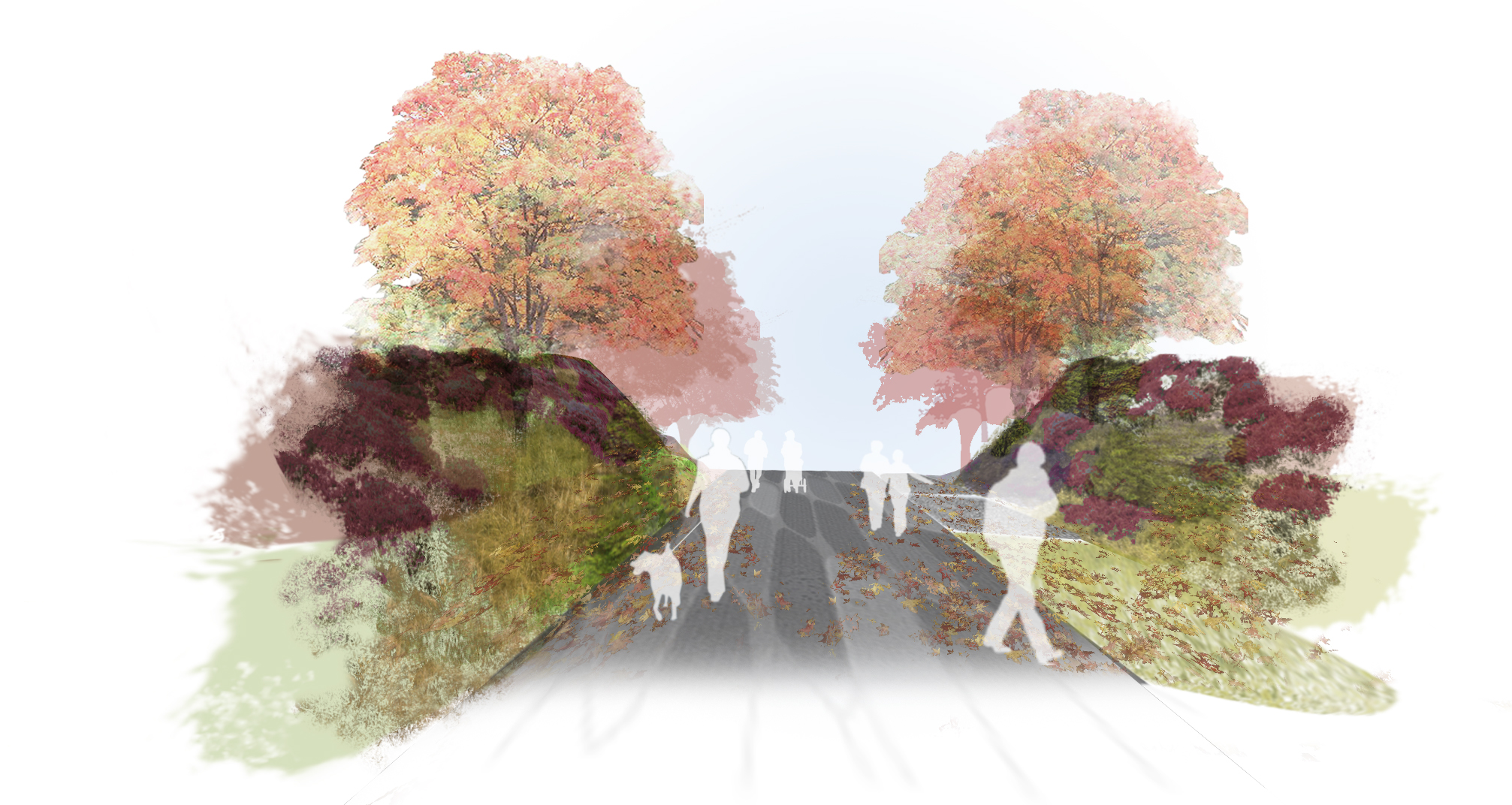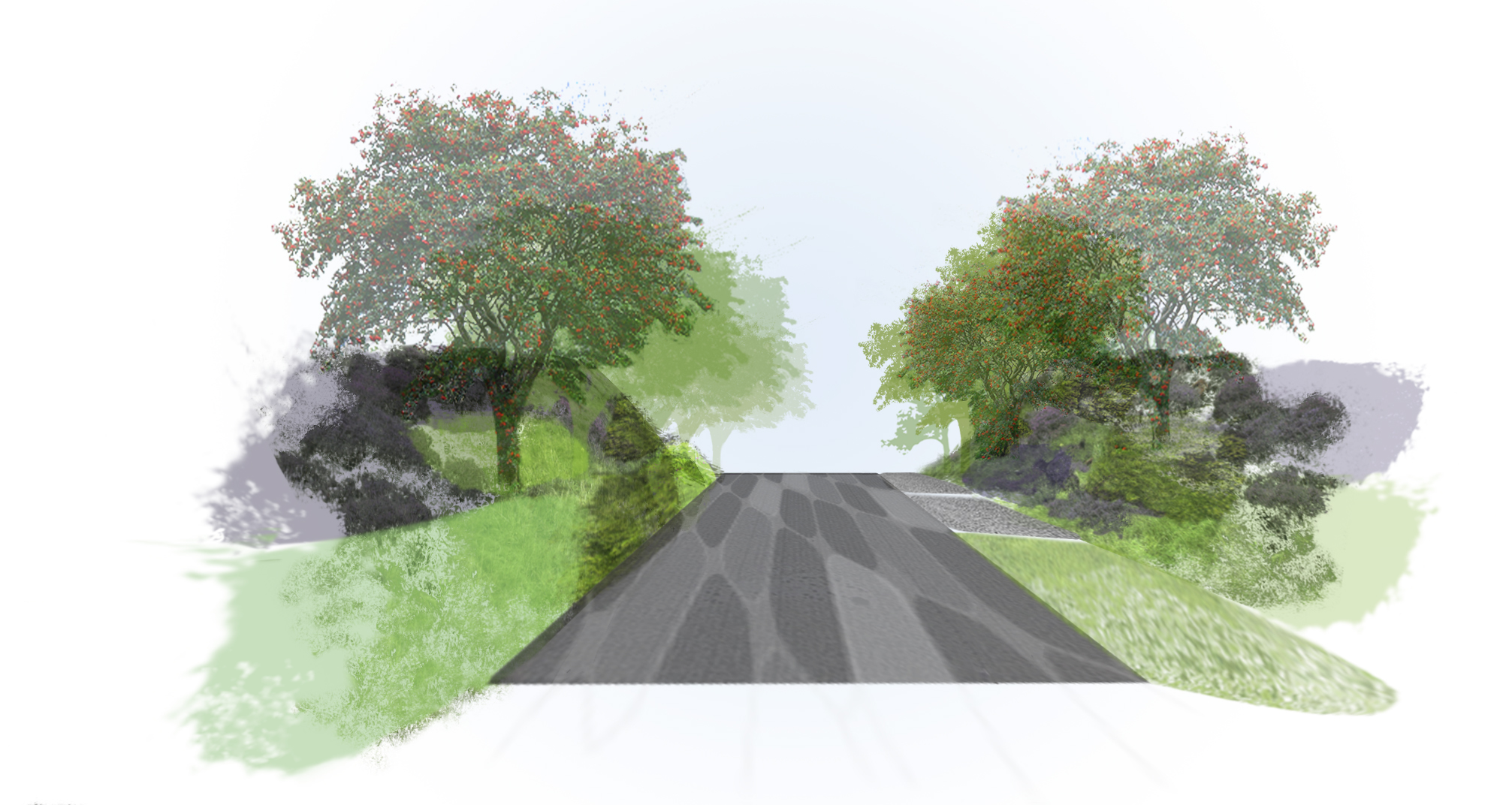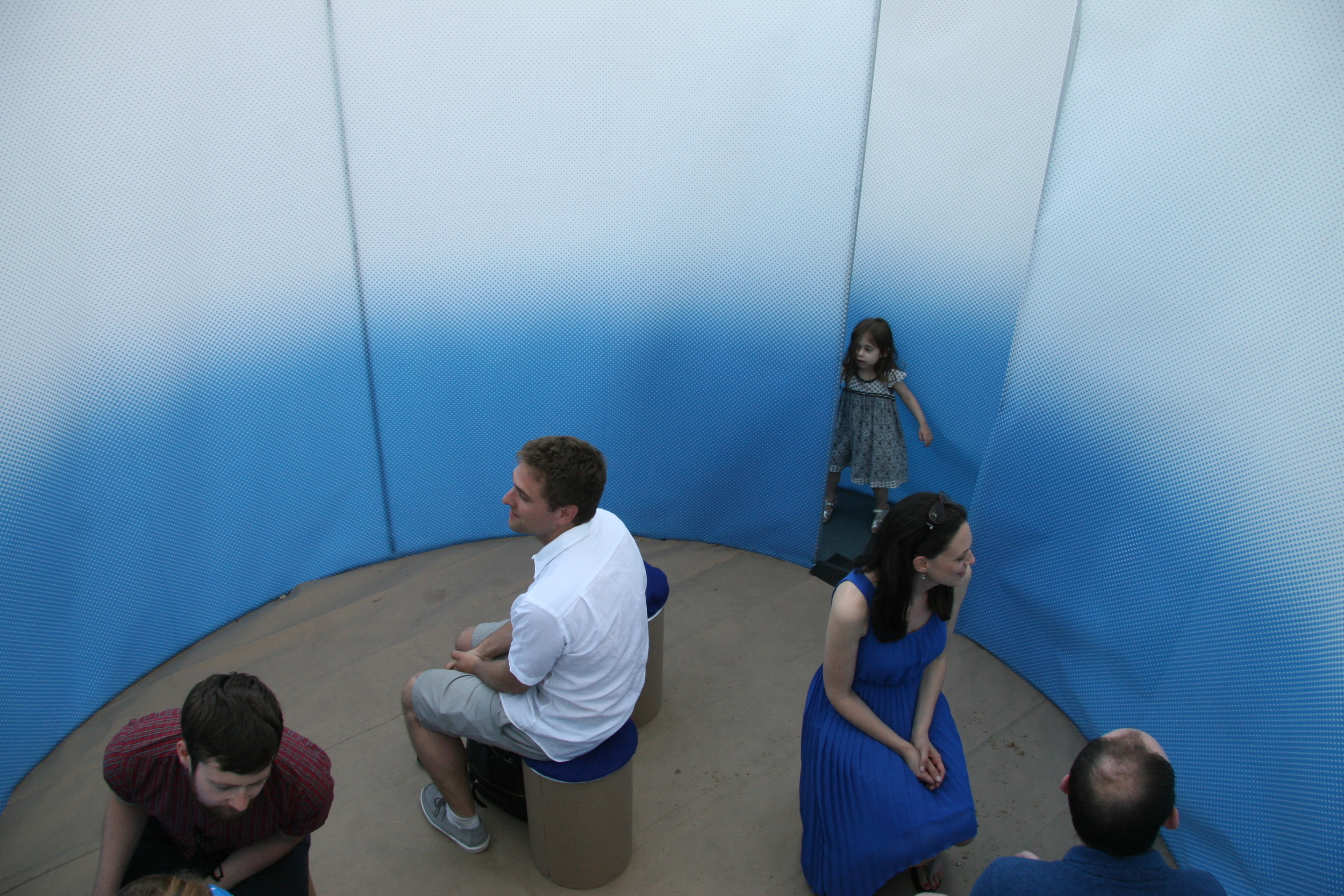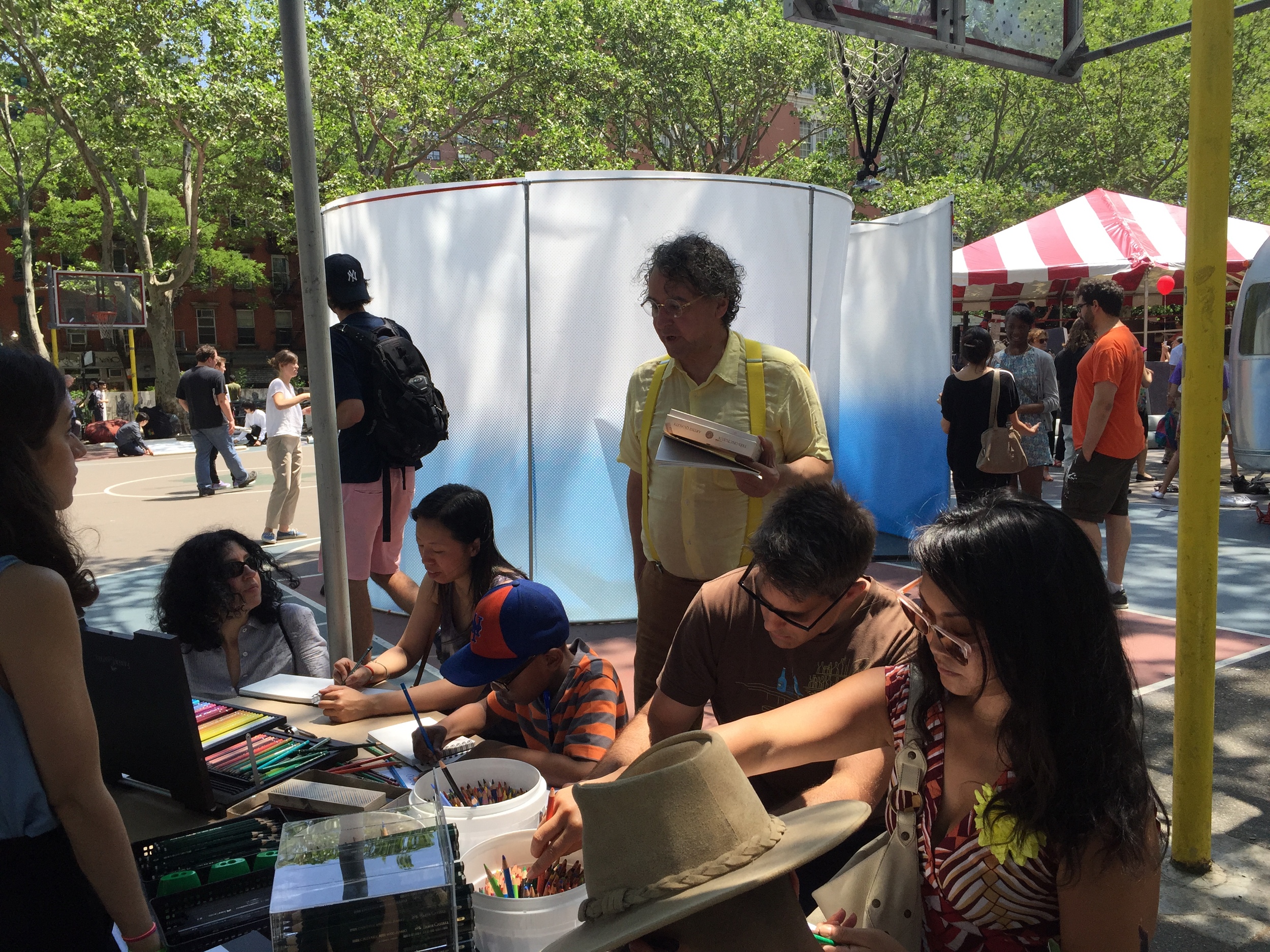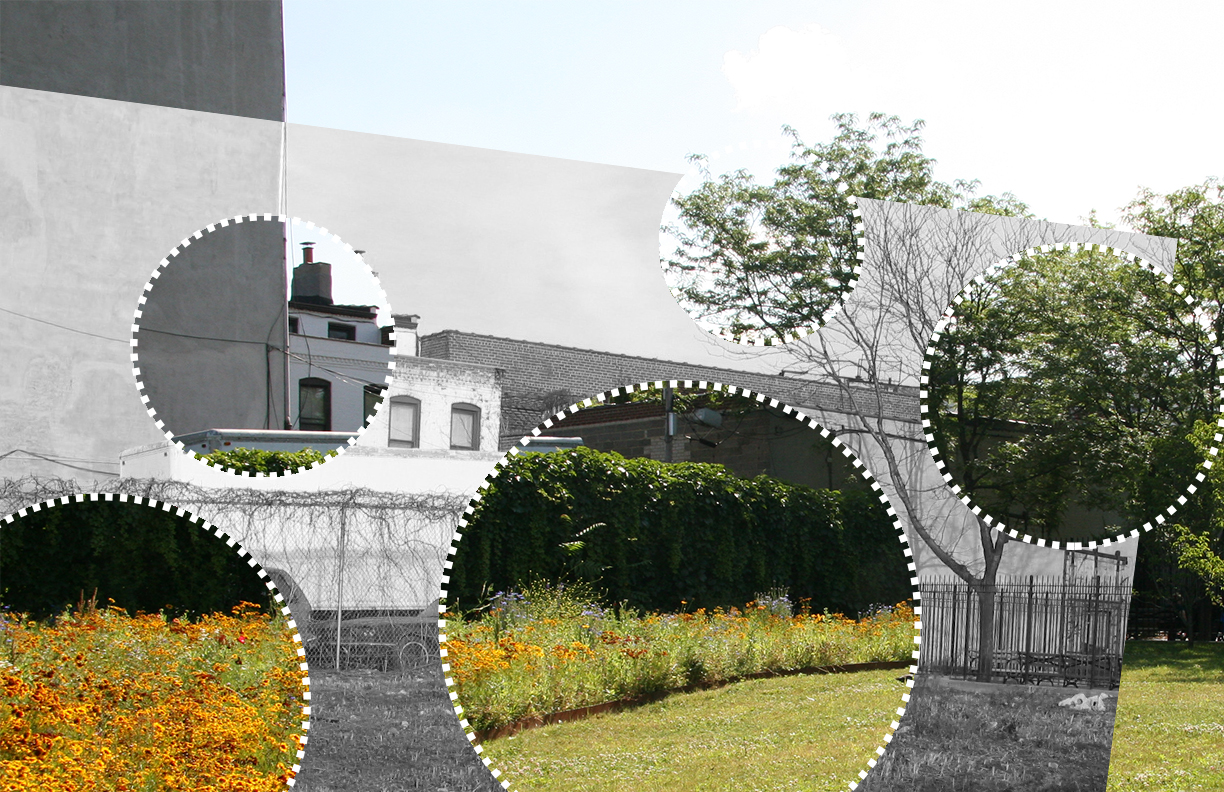2001 - Rosario, Argentina
Rosario Civic Center
Rosario, Argentina
CLIENT Municipalidad de Rosario / STATUS Constructed 2001 / DESIGN TEAM Balmori Associates, Pelli Clarke Pelli
South Garden
Option A: a space defined by an hedge of flowering shrubs and grass in the center with a largetree as focal point. A water element (a small cast iron fountain ) and benches around the space will be included to animate it. The possibility of using this space for the wedding ceremonies or for the reception after the wedding was accepted and Arq. Vidal encouraged usto continue exploring it.
Option B: a central space planted with flowering trees in an elliptical shape, surrounded by grass and shrubs. In this case the benches are under the gallery.
Civic Plaza
Conceived as a hard plaza with a paving pattern that emphasizes the axis and the inclusion of benches and a water element if the possibility of closing the plaza by night exists. We discussed the issue of the security by night and although we believed that the Café and the Health Center would generate activity, Arq. Vidal advised us to consider the inclusion of a gate. He also commented about the need to contemplate some outdoor furniture for the bar. We also talked about the importance of the “ totem’s” location in the Plaza as the symbolic element ofthe Civic Center.
North Garden
A space for basketball practice and a space for sitting under a large tree with stepping stones and a drinking fountain. The surrounding walls will be treated with a kind of brick (nido de abeja) which allows the light to go through. Vines are proposed on the top. Arq. Vidal suggested to treat the space as an outdoor waiting room for the Health Center instead of a playfield.
Streetscape
Option A: large trees spaced 9 to 10 m in between them.
Option B: For the streets with parking places we proposed large trees combined with small trees in between them. For the other two streets, we proposedlarge trees spaced 10 m in between them . The species used are Jacaranda and Tipa. The access of public to the Civic Center would be primarily by bus, secondarily place by walk and bike and in the latter by car. Arq. Vidal express the need of provide bike racks (aprox. 20 units). He also suggested including a drop off for the Registro Civil. Anotherissue that was considered is the possibility of proposing a roof garden in some of the buildings as an improvement in the mechanical systems of heating and cooling.







